
- school Campus Bookshelves
- menu_book Bookshelves
- perm_media Learning Objects
- login Login
- how_to_reg Request Instructor Account
- hub Instructor Commons
- Download Page (PDF)
- Download Full Book (PDF)
- Periodic Table
- Physics Constants
- Scientific Calculator
- Reference & Cite
- Tools expand_more
- Readability
selected template will load here
This action is not available.


6.8: Blocks to Problem Solving
- Last updated
- Save as PDF
- Page ID 54768

- Mehgan Andrade and Neil Walker
- College of the Canyons
Sometimes, previous experience or familiarity can even make problem solving more difficult. This is the case whenever habitual directions get in the way of finding new directions – an effect called fixation.
Functional Fixedness
Functional fixedness concerns the solution of object-use problems. The basic idea is that when the usual way of using an object is emphasised, it will be far more difficult for a person to use that object in a novel manner. An example for this effect is the candle problem : Imagine you are given a box of matches, some candles and tacks. On the wall of the room there is a cork- board. Your task is to fix the candle to the cork-board in such a way that no wax will drop on the floor when the candle is lit. – Got an idea?

Explanation: The clue is just the following: when people are confronted with a problem
and given certain objects to solve it, it is difficult for them to figure out that they could use them in a different (not so familiar or obvious) way. In this example the box has to be recognized as a support rather than as a container.
A further example is the two-string problem: Knut is left in a room with a chair and a pair of pliers given the task to bind two strings together that are hanging from the ceiling. The problem he faces is that he can never reach both strings at a time because they are just too far away from each other. What can Knut do?
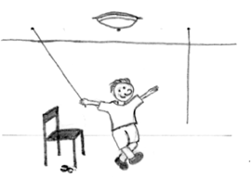
Solution: Knut has to recognize he can use the pliers in a novel function – as weight for a pendulum. He can bind them to one of the strings, push it away, hold the other string and just wait for the first one moving towards him. If necessary, Knut can even climb on the chair, but he is not that small, we suppose…
Mental Fixedness
Functional fixedness as involved in the examples above illustrates a mental set - a person’s tendency to respond to a given task in a manner based on past experience. Because Knut maps an object to a particular function he has difficulties to vary the way of use (pliers as pendulum's weight). One approach to studying fixation was to study wrong-answer verbal insight problems. It was shown that people tend to give rather an incorrect answer when failing to solve a problem than to give no answer at all.
A typical example: People are told that on a lake the area covered by water lilies doubles every 24 hours and that it takes 60 days to cover the whole lake. Then they are asked how many days it takes to cover half the lake. The typical response is '30 days' (whereas 59 days is correct).
These wrong solutions are due to an inaccurate interpretation, hence representation, of the problem. This can happen because of sloppiness (a quick shallow reading of the problemand/or weak monitoring of their efforts made to come to a solution). In this case error feedback should help people to reconsider the problem features, note the inadequacy of their first answer, and find the correct solution. If, however, people are truly fixated on their incorrect representation, being told the answer is wrong does not help. In a study made by P.I. Dallop and R.L. Dominowski in 1992 these two possibilities were contrasted. In approximately one third of the cases error feedback led to right answers, so only approximately one third of the wrong answers were due to inadequate monitoring. [6] Another approach is the study of examples with and without a preceding analogous task. In cases such like the water-jug task analogous thinking indeed leads to a correct solution, but to take a different way might make the case much simpler:
Imagine Knut again, this time he is given three jugs with different capacities and is asked to measure the required amount of water. Of course he is not allowed to use anything despite the jugs and as much water as he likes. In the first case the sizes are 127 litres, 21 litres and 3 litres while 100 litres are desired. In the second case Knut is asked to measure 18 litres from jugs of 39, 15 and three litres size.
In fact participants faced with the 100 litre task first choose a complicate way in order tosolve the second one. Others on the contrary who did not know about that complex task solved the 18 litre case by just adding three litres to 15.
Pitfalls to Problem Solving
Not all problems are successfully solved, however. What challenges stop us from successfully solving a problem? Albert Einstein once said, “Insanity is doing the same thing over and over again and expecting a different result.” Imagine a person in a room that has four doorways. One doorway that has always been open in the past is now locked. The person, accustomed to exiting the room by that particular doorway, keeps trying to get out through the same doorway even though the other three doorways are open. The person is stuck—but she just needs to go to another doorway, instead of trying to get out through the locked doorway. A mental set is where you persist in approaching a problem in a way that has worked in the past but is clearly not working now. Functional fixedness is a type of mental set where you cannot perceive an object being used for something other than what it was designed for. During the Apollo 13 mission to the moon, NASA engineers at Mission Control had to overcome functional fixedness to save the lives of the astronauts aboard the spacecraft. An explosion in a module of the spacecraft damaged multiple systems. The astronauts were in danger of being poisoned by rising levels of carbon dioxide because of problems with the carbon dioxide filters. The engineers found a way for the astronauts to use spare plastic bags, tape, and air hoses to create a makeshift air filter, which saved the lives of the astronauts.
Link to Learning
Check out this Apollo 13 scene where the group of NASA engineers are given the task of overcoming functional fixedness.
Researchers have investigated whether functional fixedness is affected by culture. In one experiment, individuals from the Shuar group in Ecuador were asked to use an object for a purpose other than that for which the object was originally intended. For example, the participants were told a story about a bear and a rabbit that were separated by a river and asked to select among various objects, including a spoon, a cup, erasers, and so on, to help the animals. The spoon was the only object long enough to span the imaginary river, but if the spoon was presented in a way that reflected its normal usage, it took participants longer to choose the spoon to solve the problem. (German & Barrett, 2005). The researchers wanted to know if exposure to highly specialized tools, as occurs with individuals in industrialized nations, affects their ability to transcend functional fixedness. It was determined that functional fixedness is experienced in both industrialized and non-industrialized cultures (German & Barrett, 2005).
Common obstacles to solving problems
The example also illustrates two common problems that sometimes happen during problem solving. One of these is functional fixedness : a tendency to regard the functions of objects and ideas as fixed (German & Barrett, 2005). Over time, we get so used to one particular purpose for an object that we overlook other uses. We may think of a dictionary, for example, as necessarily something to verify spellings and definitions, but it also can function as a gift, a doorstop, or a footstool. For students working on the nine-dot matrix described in the last section, the notion of “drawing” a line was also initially fixed; they assumed it to be connecting dots but not extending lines beyond the dots. Functional fixedness sometimes is also called response set , the tendency for a person to frame or think about each problem in a series in the same way as the previous problem, even when doing so is not appropriate to later problems. In the example of the nine-dot matrix described above, students often tried one solution after another, but each solution was constrained by a set response not to extend any line beyond the matrix.
Functional fixedness and the response set are obstacles in problem representation , the way that a person understands and organizes information provided in a problem. If information is misunderstood or used inappropriately, then mistakes are likely—if indeed the problem can be solved at all. With the nine-dot matrix problem, for example, construing the instruction to draw four lines as meaning “draw four lines entirely within the matrix” means that the problem simply could not be solved. For another, consider this problem: “The number of water lilies on a lake doubles each day. Each water lily covers exactly one square foot. If it takes 100 days for the lilies to cover the lake exactly, how many days does it take for the lilies to cover exactly half of the lake?” If you think that the size of the lilies affects the solution to this problem, you have not represented the problem correctly. Information about lily size is not relevant to the solution, and only serves to distract from the truly crucial information, the fact that the lilies double their coverage each day. (The answer, incidentally, is that the lake is half covered in 99 days; can you think why?)

Perceptual Blocks to Problem Solving.
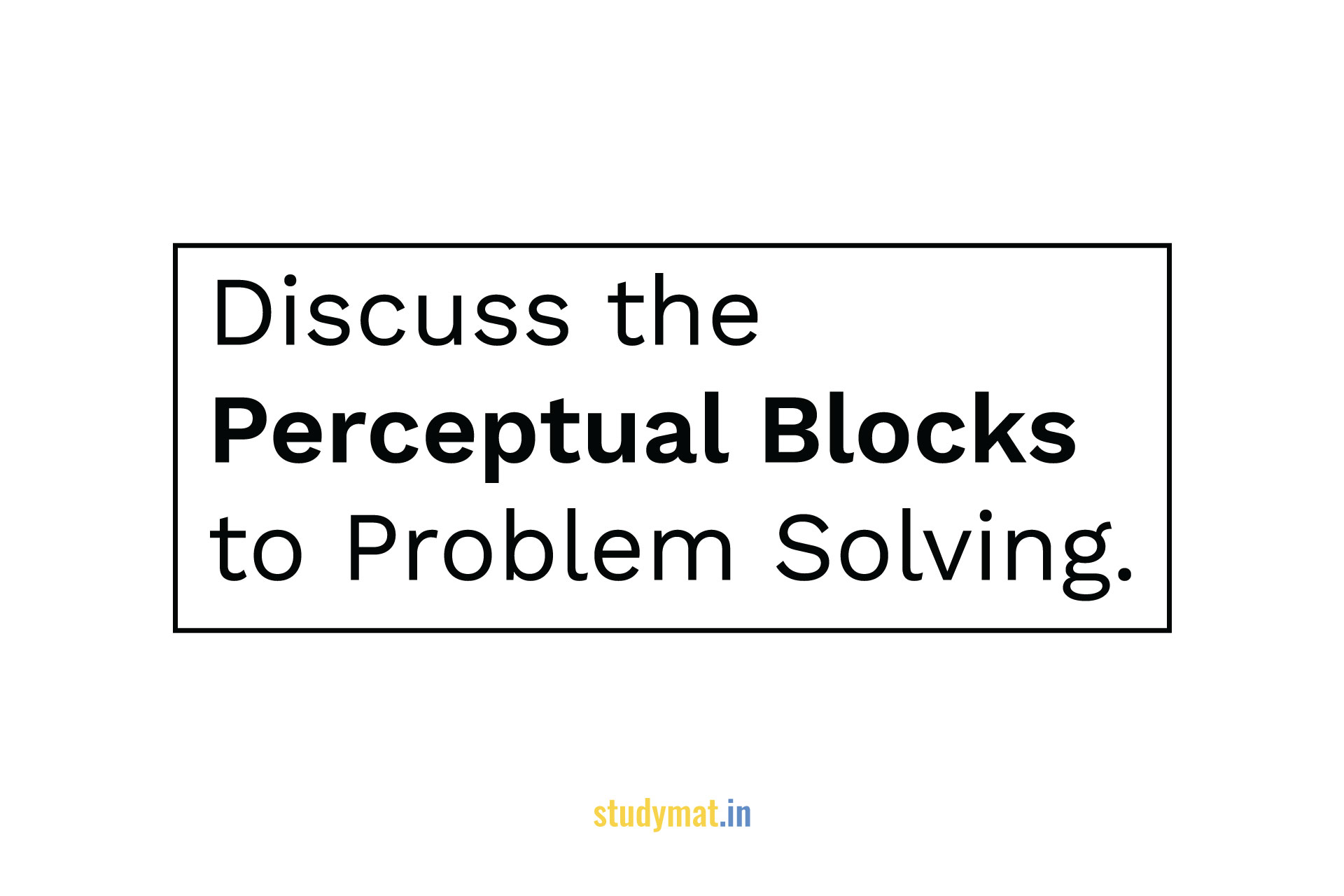
- Post category: IGNOU / MAPC / MPC 001
- Post comments: 0 Comments
- Reading time: 4 mins read
In this article, we will Discuss the Perceptual Blocks to Problem Solving.
Perceptual Blocks to Problem Solving :
Perceptual blocks exist when we are unable to recognize a problem or the information needed to solve it effectively. They include:
a) Seeing only what you expect to see – Confuses the true nature of a problem, either because we exclude relevant information or include information just because we assume it is there.
Related Search:
Explain the Key Issues in the Study of Cognitive Psychology.
Describe Waugh and Norman’s Model of Memory.
b) Stereotyping – Often we don’t look beyond the obvious and tend to label. For instance, if someone isn’t working as hard as we would like and then we apply the label ‘lazy’ to that person, we might overlook the possibility that boredom with monotonous work is the problem, and not laziness.
c) Not recognizing problems -Problems go unnoticed until the effects have become severe and emergency action is required.
d) Not seeing the problem in perspective – This results from taking too narrow a view of the situation so that we recognize only a part of the problem or the information required to solve it. Sometimes people fail to recognize how different parts of the problem are related, rather they look at the problem more superficially, and hence the solution also becomes insufficient.
Compare and Contrast the Behaviouristic and Innate Theory of Language Acquisition.
Discuss the Various Approaches to Problem Solving.
e) Mistaking cause and effect – If cause and effect are confused then we are improbable to find an effective solution. For instance, if goods don’t arrive and we assume that the supplier is late in despatching them when our ordering department has failed to send out the order, our search for solutions will be misdirected. During this situation, the late despatch of the goods is an effect of the problem and not a cause.
If you like this article, you can Follow us on Facebook . Also, you can Join our Official Facebook Group for QnA Sessions and Discussions with the worldwide IGNOU community.
Share This Share this content
- Opens in a new window
You Might Also Like
Flow at work. factors which would result in flow at work., intimacy vs isolation., which form of well-being (hedonic or eudaimonic or social) is more relevant in the present day world and why, leave a reply cancel reply.
Save my name, email, and website in this browser for the next time I comment.
Piaget’s Theory and Stages of Cognitive Development
Saul Mcleod, PhD
Editor-in-Chief for Simply Psychology
BSc (Hons) Psychology, MRes, PhD, University of Manchester
Saul Mcleod, PhD., is a qualified psychology teacher with over 18 years of experience in further and higher education. He has been published in peer-reviewed journals, including the Journal of Clinical Psychology.
Learn about our Editorial Process
Olivia Guy-Evans, MSc
Associate Editor for Simply Psychology
BSc (Hons) Psychology, MSc Psychology of Education
Olivia Guy-Evans is a writer and associate editor for Simply Psychology. She has previously worked in healthcare and educational sectors.
On This Page:
Key Takeaways
- Jean Piaget is famous for his theories regarding changes in cognitive development that occur as we move from infancy to adulthood.
- Cognitive development results from the interplay between innate capabilities (nature) and environmental influences (nurture).
- Children progress through four distinct stages , each representing varying cognitive abilities and world comprehension: the sensorimotor stage (birth to 2 years), the preoperational stage (2 to 7 years), the concrete operational stage (7 to 11 years), and the formal operational stage (11 years and beyond).
- A child’s cognitive development is not just about acquiring knowledge, the child has to develop or construct a mental model of the world, which is referred to as a schema .
- Piaget emphasized the role of active exploration and interaction with the environment in shaping cognitive development, highlighting the importance of assimilation and accommodation in constructing mental schemas.
Stages of Development
Jean Piaget’s theory of cognitive development suggests that children move through four different stages of intellectual development which reflect the increasing sophistication of children’s thought
Each child goes through the stages in the same order (but not all at the same rate), and child development is determined by biological maturation and interaction with the environment.
At each stage of development, the child’s thinking is qualitatively different from the other stages, that is, each stage involves a different type of intelligence.
Although no stage can be missed out, there are individual differences in the rate at which children progress through stages, and some individuals may never attain the later stages.
Piaget did not claim that a particular stage was reached at a certain age – although descriptions of the stages often include an indication of the age at which the average child would reach each stage.
The Sensorimotor Stage
Ages: Birth to 2 Years
The first stage is the sensorimotor stage , during which the infant focuses on physical sensations and learning to coordinate its body.

Major Characteristics and Developmental Changes:
- The infant learns about the world through their senses and through their actions (moving around and exploring their environment).
- During the sensorimotor stage, a range of cognitive abilities develop. These include: object permanence; self-recognition (the child realizes that other people are separate from them); deferred imitation; and representational play.
- They relate to the emergence of the general symbolic function, which is the capacity to represent the world mentally
- At about 8 months, the infant will understand the permanence of objects and that they will still exist even if they can’t see them and the infant will search for them when they disappear.
During the beginning of this stage, the infant lives in the present. It does not yet have a mental picture of the world stored in its memory therefore it does not have a sense of object permanence.
If it cannot see something, then it does not exist. This is why you can hide a toy from an infant, while it watches, but it will not search for the object once it has gone out of sight.
The main achievement during this stage is object permanence – knowing that an object still exists, even if it is hidden. It requires the ability to form a mental representation (i.e., a schema) of the object.
Towards the end of this stage the general symbolic function begins to appear where children show in their play that they can use one object to stand for another. Language starts to appear because they realise that words can be used to represent objects and feelings.
The child begins to be able to store information that it knows about the world, recall it, and label it.
Individual Differences
- Cultural Practices : In some cultures, babies are carried on their mothers’ backs throughout the day. This constant physical contact and varied stimuli can influence how a child perceives their environment and their sense of object permanence.
- Gender Norms : Toys assigned to babies can differ based on gender expectations. A boy might be given more cars or action figures, while a girl might receive dolls or kitchen sets. This can influence early interactions and sensory explorations.
Learn More: The Sensorimotor Stage of Cognitive Development
The Preoperational Stage
Ages: 2 – 7 Years
Piaget’s second stage of intellectual development is the preoperational stage . It takes place between 2 and 7 years. At the beginning of this stage, the child does not use operations, so the thinking is influenced by the way things appear rather than logical reasoning.
A child cannot conserve which means that the child does not understand that quantity remains the same even if the appearance changes.
Furthermore, the child is egocentric; he assumes that other people see the world as he does. This has been shown in the three mountains study.
As the preoperational stage develops, egocentrism declines, and children begin to enjoy the participation of another child in their games, and let’s pretend play becomes more important.
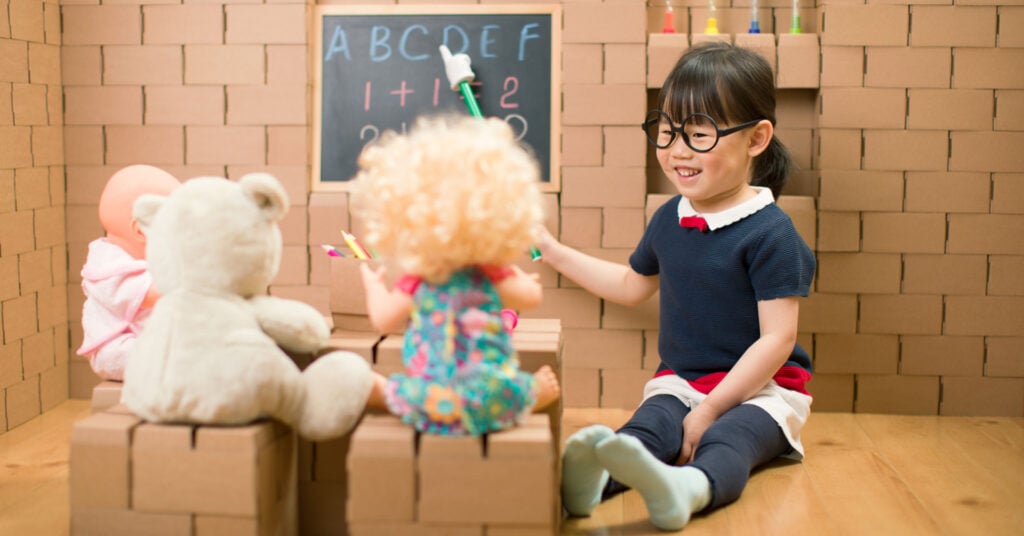
Toddlers often pretend to be people they are not (e.g. superheroes, policemen), and may play these roles with props that symbolize real-life objects. Children may also invent an imaginary playmate.
- Toddlers and young children acquire the ability to internally represent the world through language and mental imagery.
- During this stage, young children can think about things symbolically. This is the ability to make one thing, such as a word or an object, stand for something other than itself.
- A child’s thinking is dominated by how the world looks, not how the world is. It is not yet capable of logical (problem-solving) type of thought.
- Moreover, the child has difficulties with class inclusion; he can classify objects but cannot include objects in sub-sets, which involves classifying objects as belonging to two or more categories simultaneously.
- Infants at this stage also demonstrate animism. This is the tendency for the child to think that non-living objects (such as toys) have life and feelings like a person’s.
By 2 years, children have made some progress toward detaching their thoughts from the physical world. However, have not yet developed logical (or “operational”) thought characteristics of later stages.
Thinking is still intuitive (based on subjective judgments about situations) and egocentric (centered on the child’s own view of the world).
- Cultural Storytelling : Different cultures have unique stories, myths, and folklore. Children from diverse backgrounds might understand and interpret symbolic elements differently based on their cultural narratives.
- Race & Representation : A child’s racial identity can influence how they engage in pretend play. For instance, a lack of diverse representation in media and toys might lead children of color to recreate scenarios that don’t reflect their experiences or background.
Learn More: The Preoperational Stage of Cognitive Development
The Concrete Operational Stage
Ages: 7 – 11 Years
By the beginning of the concrete operational stage , the child can use operations (a set of logical rules) so they can conserve quantities, realize that people see the world in a different way (decentring), and demonstrate improvement in inclusion tasks. Children still have difficulties with abstract thinking.

- During this stage, children begin to think logically about concrete events.
- Children begin to understand the concept of conservation; understanding that, although things may change in appearance, certain properties remain the same.
- During this stage, children can mentally reverse things (e.g., picture a ball of plasticine returning to its original shape).
- During this stage, children also become less egocentric and begin to think about how other people might think and feel.
The stage is called concrete because children can think logically much more successfully if they can manipulate real (concrete) materials or pictures of them.
Piaget considered the concrete stage a major turning point in the child’s cognitive development because it marks the beginning of logical or operational thought. This means the child can work things out internally in their head (rather than physically try things out in the real world).
Children can conserve number (age 6), mass (age 7), and weight (age 9). Conservation is the understanding that something stays the same in quantity even though its appearance changes.
But operational thought is only effective here if the child is asked to reason about materials that are physically present. Children at this stage will tend to make mistakes or be overwhelmed when asked to reason about abstract or hypothetical problems.
- Cultural Context in Conservation Tasks : In a society where resources are scarce, children might demonstrate conservation skills earlier due to the cultural emphasis on preserving and reusing materials.
- Gender & Learning : Stereotypes about gender abilities, like “boys are better at math,” can influence how children approach logical problems or classify objects based on perceived gender norms.
Learn More: The Concrete Operational Stage of Development
The Formal Operational Stage
Ages: 12 and Over
The formal operational period begins at about age 11. As adolescents enter this stage, they gain the ability to think in an abstract manner, the ability to combine and classify items in a more sophisticated way, and the capacity for higher-order reasoning.

Adolescents can think systematically and reason about what might be as well as what is (not everyone achieves this stage). This allows them to understand politics, ethics, and science fiction, as well as to engage in scientific reasoning.
Adolescents can deal with abstract ideas: e.g. they can understand division and fractions without having to actually divide things up, and solve hypothetical (imaginary) problems.
- Concrete operations are carried out on things whereas formal operations are carried out on ideas. Formal operational thought is entirely freed from physical and perceptual constraints.
- During this stage, adolescents can deal with abstract ideas (e.g. no longer needing to think about slicing up cakes or sharing sweets to understand division and fractions).
- They can follow the form of an argument without having to think in terms of specific examples.
- Adolescents can deal with hypothetical problems with many possible solutions. E.g. if asked ‘What would happen if money were abolished in one hour’s time? they could speculate about many possible consequences.
From about 12 years children can follow the form of a logical argument without reference to its content. During this time, people develop the ability to think about abstract concepts, and logically test hypotheses.
This stage sees the emergence of scientific thinking, formulating abstract theories and hypotheses when faced with a problem.
- Culture & Abstract Thinking : Cultures emphasize different kinds of logical or abstract thinking. For example, in societies with a strong oral tradition, the ability to hold complex narratives might develop prominently.
- Gender & Ethics : Discussions about morality and ethics can be influenced by gender norms. For instance, in some cultures, girls might be encouraged to prioritize community harmony, while boys might be encouraged to prioritize individual rights.
Learn More: The Formal Operational Stage of Development
Piaget’s Theory
- Piaget’s theory places a strong emphasis on the active role that children play in their own cognitive development.
- According to Piaget, children are not passive recipients of information; instead, they actively explore and interact with their surroundings.
- This active engagement with the environment is crucial because it allows them to gradually build their understanding of the world.
1. How Piaget Developed the Theory
Piaget was employed at the Binet Institute in the 1920s, where his job was to develop French versions of questions on English intelligence tests. He became intrigued with the reasons children gave for their wrong answers to the questions that required logical thinking.
He believed that these incorrect answers revealed important differences between the thinking of adults and children.
Piaget branched out on his own with a new set of assumptions about children’s intelligence:
- Children’s intelligence differs from an adult’s in quality rather than in quantity. This means that children reason (think) differently from adults and see the world in different ways.
- Children actively build up their knowledge about the world . They are not passive creatures waiting for someone to fill their heads with knowledge.
- The best way to understand children’s reasoning is to see things from their point of view.
Piaget did not want to measure how well children could count, spell or solve problems as a way of grading their I.Q. What he was more interested in was the way in which fundamental concepts like the very idea of number , time, quantity, causality , justice , and so on emerged.
Piaget studied children from infancy to adolescence using naturalistic observation of his own three babies and sometimes controlled observation too. From these, he wrote diary descriptions charting their development.
He also used clinical interviews and observations of older children who were able to understand questions and hold conversations.
2. Piaget’s Theory Differs From Others In Several Ways:
Piaget’s (1936, 1950) theory of cognitive development explains how a child constructs a mental model of the world. He disagreed with the idea that intelligence was a fixed trait, and regarded cognitive development as a process that occurs due to biological maturation and interaction with the environment.
Children’s ability to understand, think about, and solve problems in the world develops in a stop-start, discontinuous manner (rather than gradual changes over time).
- It is concerned with children, rather than all learners.
- It focuses on development, rather than learning per se, so it does not address learning of information or specific behaviors.
- It proposes discrete stages of development, marked by qualitative differences, rather than a gradual increase in number and complexity of behaviors, concepts, ideas, etc.
The goal of the theory is to explain the mechanisms and processes by which the infant, and then the child, develops into an individual who can reason and think using hypotheses.
To Piaget, cognitive development was a progressive reorganization of mental processes as a result of biological maturation and environmental experience.
Children construct an understanding of the world around them, then experience discrepancies between what they already know and what they discover in their environment.
Piaget claimed that knowledge cannot simply emerge from sensory experience; some initial structure is necessary to make sense of the world.
According to Piaget, children are born with a very basic mental structure (genetically inherited and evolved) on which all subsequent learning and knowledge are based.
Schemas are the basic building blocks of such cognitive models, and enable us to form a mental representation of the world.
Piaget (1952, p. 7) defined a schema as: “a cohesive, repeatable action sequence possessing component actions that are tightly interconnected and governed by a core meaning.”
In more simple terms, Piaget called the schema the basic building block of intelligent behavior – a way of organizing knowledge. Indeed, it is useful to think of schemas as “units” of knowledge, each relating to one aspect of the world, including objects, actions, and abstract (i.e., theoretical) concepts.
Wadsworth (2004) suggests that schemata (the plural of schema) be thought of as “index cards” filed in the brain, each one telling an individual how to react to incoming stimuli or information.
When Piaget talked about the development of a person’s mental processes, he was referring to increases in the number and complexity of the schemata that a person had learned.
When a child’s existing schemas are capable of explaining what it can perceive around it, it is said to be in a state of equilibrium, i.e., a state of cognitive (i.e., mental) balance.
Operations are more sophisticated mental structures which allow us to combine schemas in a logical (reasonable) way.
As children grow they can carry out more complex operations and begin to imagine hypothetical (imaginary) situations.
Apart from the schemas we are born with schemas and operations are learned through interaction with other people and the environment.
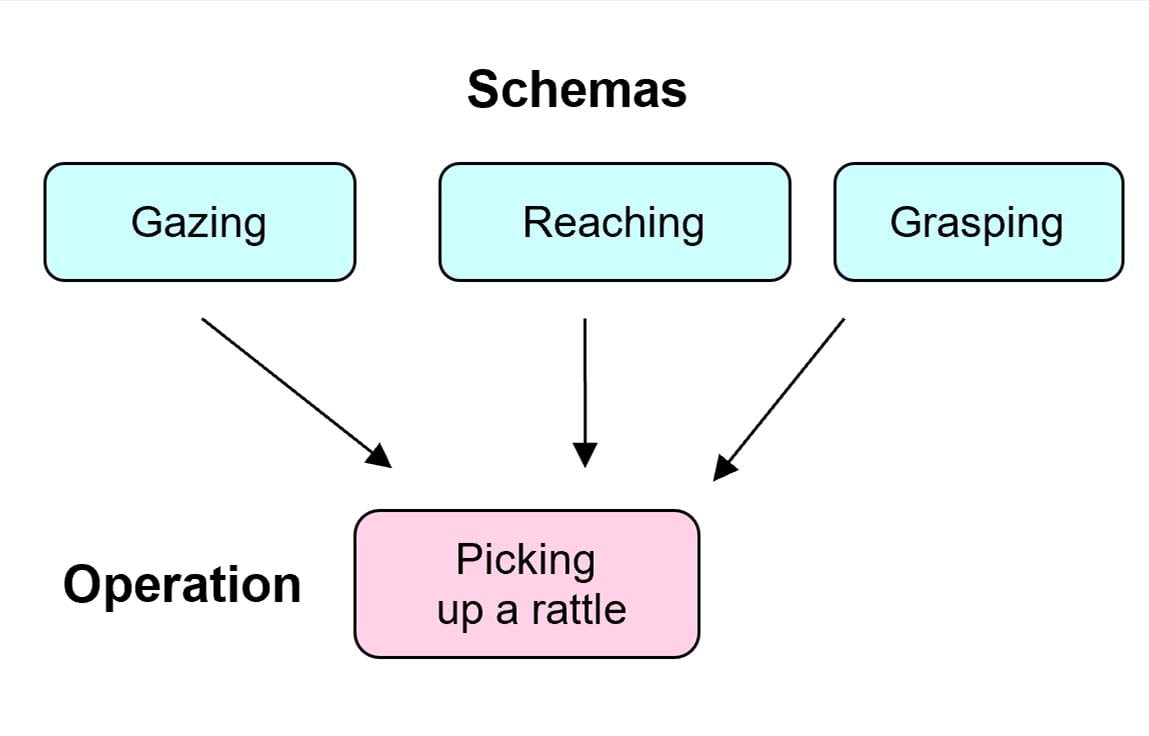
Piaget emphasized the importance of schemas in cognitive development and described how they were developed or acquired.
A schema can be defined as a set of linked mental representations of the world, which we use both to understand and to respond to situations. The assumption is that we store these mental representations and apply them when needed.
Examples of Schemas
A person might have a schema about buying a meal in a restaurant. The schema is a stored form of the pattern of behavior which includes looking at a menu, ordering food, eating it and paying the bill.
This is an example of a schema called a “script.” Whenever they are in a restaurant, they retrieve this schema from memory and apply it to the situation.
The schemas Piaget described tend to be simpler than this – especially those used by infants. He described how – as a child gets older – his or her schemas become more numerous and elaborate.
Piaget believed that newborn babies have a small number of innate schemas – even before they have had many opportunities to experience the world. These neonatal schemas are the cognitive structures underlying innate reflexes. These reflexes are genetically programmed into us.
For example, babies have a sucking reflex, which is triggered by something touching the baby’s lips. A baby will suck a nipple, a comforter (dummy), or a person’s finger. Piaget, therefore, assumed that the baby has a “sucking schema.”
Similarly, the grasping reflex which is elicited when something touches the palm of a baby’s hand, or the rooting reflex, in which a baby will turn its head towards something which touches its cheek, are innate schemas. Shaking a rattle would be the combination of two schemas, grasping and shaking.
4. The Process of Adaptation
Piaget also believed that a child developed as a result of two different influences: maturation, and interaction with the environment. The child develops mental structures (schemata) which enables him to solve problems in the environment.
Adaptation is the process by which the child changes its mental models of the world to match more closely how the world actually is.
Adaptation is brought about by the processes of assimilation (solving new experiences using existing schemata) and accommodation (changing existing schemata in order to solve new experiences).
The importance of this viewpoint is that the child is seen as an active participant in its own development rather than a passive recipient of either biological influences (maturation) or environmental stimulation.
When our existing schemas can explain what we perceive around us, we are in a state of equilibration . However, when we meet a new situation that we cannot explain it creates disequilibrium, this is an unpleasant sensation which we try to escape, and this gives us the motivation to learn.
According to Piaget, reorganization to higher levels of thinking is not accomplished easily. The child must “rethink” his or her view of the world. An important step in the process is the experience of cognitive conflict.
In other words, the child becomes aware that he or she holds two contradictory views about a situation and they both cannot be true. This step is referred to as disequilibrium .
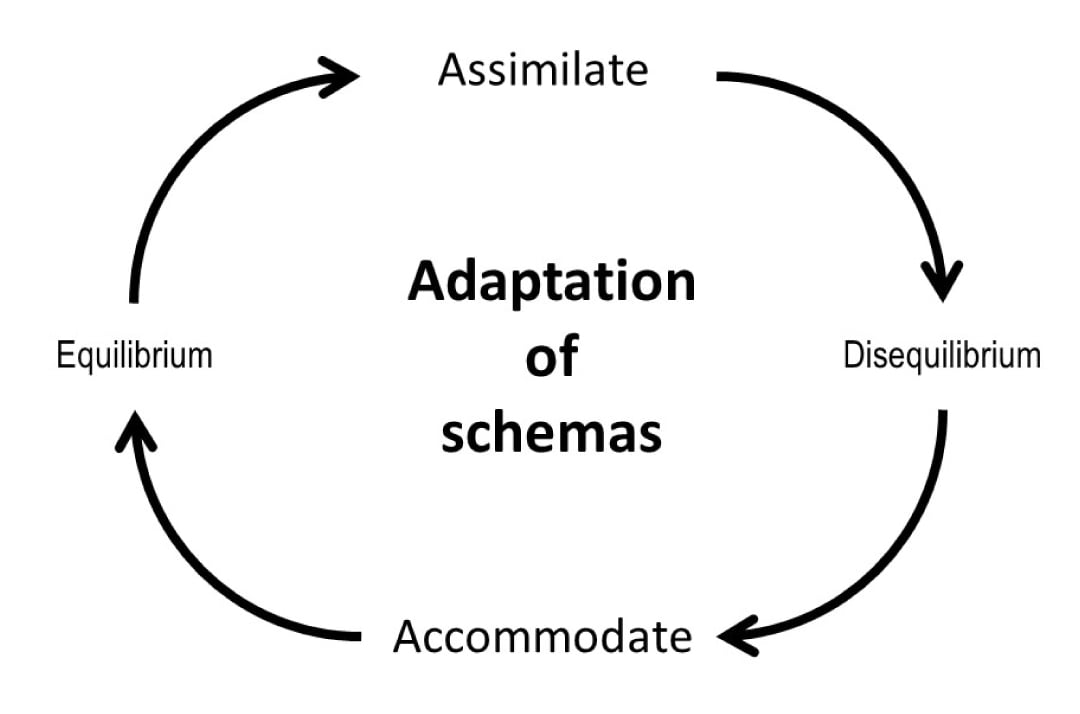
Jean Piaget (1952; see also Wadsworth, 2004) viewed intellectual growth as a process of adaptation (adjustment) to the world. This happens through assimilation, accommodation, and equilibration.
To get back to a state of equilibration, we need to modify our existing schemas to learn and adapt to the new situation.
This is done through the processes of accommodation and assimilation . This is how our schemas evolve and become more sophisticated. The processes of assimilation and accommodation are continuous and interactive.
5. Assimilation
Piaget defined assimilation as the cognitive process of fitting new information into existing cognitive schemas, perceptions, and understanding. Overall beliefs and understanding of the world do not change as a result of the new information.
Assimilation occurs when the new experience is not very different from previous experiences of a particular object or situation we assimilate the new situation by adding information to a previous schema.
This means that when you are faced with new information, you make sense of this information by referring to information you already have (information processed and learned previously) and trying to fit the new information into the information you already have.
- Imagine a young child who has only ever seen small, domesticated dogs. When the child sees a cat for the first time, they might refer to it as a “dog” because it has four legs, fur, and a tail – features that fit their existing schema of a dog.
- A person who has always believed that all birds can fly might label penguins as birds that can fly. This is because their existing schema or understanding of birds includes the ability to fly.
- A 2-year-old child sees a man who is bald on top of his head and has long frizzy hair on the sides. To his father’s horror, the toddler shouts “Clown, clown” (Siegler et al., 2003).
- If a baby learns to pick up a rattle he or she will then use the same schema (grasping) to pick up other objects.
6. Accommodation
Accommodation: when the new experience is very different from what we have encountered before we need to change our schemas in a very radical way or create a whole new schema.
Psychologist Jean Piaget defined accommodation as the cognitive process of revising existing cognitive schemas, perceptions, and understanding so that new information can be incorporated.
This happens when the existing schema (knowledge) does not work, and needs to be changed to deal with a new object or situation.
In order to make sense of some new information, you actually adjust information you already have (schemas you already have, etc.) to make room for this new information.
- A baby tries to use the same schema for grasping to pick up a very small object. It doesn’t work. The baby then changes the schema by now using the forefinger and thumb to pick up the object.
- A child may have a schema for birds (feathers, flying, etc.) and then they see a plane, which also flies, but would not fit into their bird schema.
- In the “clown” incident, the boy’s father explained to his son that the man was not a clown and that even though his hair was like a clown’s, he wasn’t wearing a funny costume and wasn’t doing silly things to make people laugh. With this new knowledge, the boy was able to change his schema of “clown” and make this idea fit better to a standard concept of “clown”.
- A person who grew up thinking all snakes are dangerous might move to an area where garden snakes are common and harmless. Over time, after observing and learning, they might accommodate their previous belief to understand that not all snakes are harmful.
7. Equilibration
Piaget believed that all human thought seeks order and is uncomfortable with contradictions and inconsistencies in knowledge structures. In other words, we seek “equilibrium” in our cognitive structures.
Equilibrium occurs when a child’s schemas can deal with most new information through assimilation. However, an unpleasant state of disequilibrium occurs when new information cannot be fitted into existing schemas (assimilation).
Piaget believed that cognitive development did not progress at a steady rate, but rather in leaps and bounds. Equilibration is the force which drives the learning process as we do not like to be frustrated and will seek to restore balance by mastering the new challenge (accommodation).
Once the new information is acquired the process of assimilation with the new schema will continue until the next time we need to make an adjustment to it.
Equilibration is a regulatory process that maintains a balance between assimilation and accommodation to facilitate cognitive growth. Think of it this way: We can’t merely assimilate all the time; if we did, we would never learn any new concepts or principles.
Everything new we encountered would just get put in the same few “slots” we already had. Neither can we accommodate all the time; if we did, everything we encountered would seem new; there would be no recurring regularities in our world. We’d be exhausted by the mental effort!
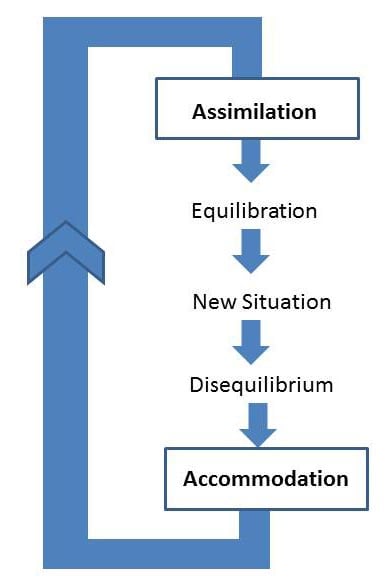
Applications to Education
Think of old black and white films that you’ve seen in which children sat in rows at desks, with ink wells, would learn by rote, all chanting in unison in response to questions set by an authoritarian old biddy like Matilda!
Children who were unable to keep up were seen as slacking and would be punished by variations on the theme of corporal punishment. Yes, it really did happen and in some parts of the world still does today.
Piaget is partly responsible for the change that occurred in the 1960s and for your relatively pleasurable and pain-free school days!

“Children should be able to do their own experimenting and their own research. Teachers, of course, can guide them by providing appropriate materials, but the essential thing is that in order for a child to understand something, he must construct it himself, he must re-invent it. Every time we teach a child something, we keep him from inventing it himself. On the other hand that which we allow him to discover by himself will remain with him visibly”. Piaget (1972, p. 27)
Plowden Report
Piaget (1952) did not explicitly relate his theory to education, although later researchers have explained how features of Piaget’s theory can be applied to teaching and learning.
Piaget has been extremely influential in developing educational policy and teaching practice. For example, a review of primary education by the UK government in 1966 was based strongly on Piaget’s theory. The result of this review led to the publication of the Plowden Report (1967).
In the 1960s the Plowden Committee investigated the deficiencies in education and decided to incorporate many of Piaget’s ideas into its final report published in 1967, even though Piaget’s work was not really designed for education.
The report makes three Piaget-associated recommendations:
- Children should be given individual attention and it should be realized that they need to be treated differently.
- Children should only be taught things that they are capable of learning
- Children mature at different rates and the teacher needs to be aware of the stage of development of each child so teaching can be tailored to their individual needs.
“The report’s recurring themes are individual learning, flexibility in the curriculum, the centrality of play in children’s learning, the use of the environment, learning by discovery and the importance of the evaluation of children’s progress – teachers should “not assume that only what is measurable is valuable.”
Discovery learning – the idea that children learn best through doing and actively exploring – was seen as central to the transformation of the primary school curriculum.
How to teach
Within the classroom learning should be student-centered and accomplished through active discovery learning. The role of the teacher is to facilitate learning, rather than direct tuition.
Because Piaget’s theory is based upon biological maturation and stages, the notion of “readiness” is important. Readiness concerns when certain information or concepts should be taught.
According to Piaget’s theory, children should not be taught certain concepts until they have reached the appropriate stage of cognitive development.
According to Piaget (1958), assimilation and accommodation require an active learner, not a passive one, because problem-solving skills cannot be taught, they must be discovered.
Therefore, teachers should encourage the following within the classroom:
- Educational programs should be designed to correspond to Piaget’s stages of development. Children in the concrete operational stage should be given concrete means to learn new concepts e.g. tokens for counting.
- Devising situations that present useful problems, and create disequilibrium in the child.
- Focus on the process of learning, rather than the end product of it. Instead of checking if children have the right answer, the teacher should focus on the student’s understanding and the processes they used to get to the answer.
- Child-centered approach. Learning must be active (discovery learning). Children should be encouraged to discover for themselves and to interact with the material instead of being given ready-made knowledge.
- Accepting that children develop at different rates so arrange activities for individual children or small groups rather than assume that all the children can cope with a particular activity.
- Using active methods that require rediscovering or reconstructing “truths.”
- Using collaborative, as well as individual activities (so children can learn from each other).
- Evaluate the level of the child’s development so suitable tasks can be set.
- Adapt lessons to suit the needs of the individual child (i.e. differentiated teaching).
- Be aware of the child’s stage of development (testing).
- Teach only when the child is ready. i.e. has the child reached the appropriate stage.
- Providing support for the “spontaneous research” of the child.
- Using collaborative, as well as individual activities.
- Educators may use Piaget’s stages to design age-appropriate assessment tools and strategies.
Classroom Activities
Sensorimotor stage (0-2 years):.
Although most kids in this age range are not in a traditional classroom setting, they can still benefit from games that stimulate their senses and motor skills.
- Object Permanence Games : Play peek-a-boo or hide toys under a blanket to help babies understand that objects still exist even when they can’t see them.
- Sensory Play : Activities like water play, sand play, or playdough encourage exploration through touch.
- Imitation : Children at this age love to imitate adults. Use imitation as a way to teach new skills.
Preoperational Stage (2-7 years):
- Role Playing : Set up pretend play areas where children can act out different scenarios, such as a kitchen, hospital, or market.
- Use of Symbols : Encourage drawing, building, and using props to represent other things.
- Hands-on Activities : Children should interact physically with their environment, so provide plenty of opportunities for hands-on learning.
- Egocentrism Activities : Use exercises that highlight different perspectives. For instance, having two children sit across from each other with an object in between and asking them what the other sees.
Concrete Operational Stage (7-11 years):
- Classification Tasks : Provide objects or pictures to group, based on various characteristics.
- Hands-on Experiments : Introduce basic science experiments where they can observe cause and effect, like a simple volcano with baking soda and vinegar.
- Logical Games : Board games, puzzles, and logic problems help develop their thinking skills.
- Conservation Tasks : Use experiments to showcase that quantity doesn’t change with alterations in shape, such as the classic liquid conservation task using different shaped glasses.
Formal Operational Stage (11 years and older):
- Hypothesis Testing : Encourage students to make predictions and test them out.
- Abstract Thinking : Introduce topics that require abstract reasoning, such as algebra or ethical dilemmas.
- Problem Solving : Provide complex problems and have students work on solutions, integrating various subjects and concepts.
- Debate and Discussion : Encourage group discussions and debates on abstract topics, highlighting the importance of logic and evidence.
- Feedback and Questioning : Use open-ended questions to challenge students and promote higher-order thinking. For instance, rather than asking, “Is this the right answer?”, ask, “How did you arrive at this conclusion?”
While Piaget’s stages offer a foundational framework, they are not universally experienced in the same way by all children.
Social identities play a critical role in shaping cognitive development, necessitating a more nuanced and culturally responsive approach to understanding child development.
Piaget’s stages may manifest differently based on social identities like race, gender, and culture:
- Race & Teacher Interactions : A child’s race can influence teacher expectations and interactions. For example, racial biases can lead to children of color being perceived as less capable or more disruptive, influencing their cognitive challenges and supports.
- Racial and Cultural Stereotypes : These can affect a child’s self-perception and self-efficacy . For instance, stereotypes about which racial or cultural groups are “better” at certain subjects can influence a child’s self-confidence and, subsequently, their engagement in that subject.
- Gender & Peer Interactions : Children learn gender roles from their peers. Boys might be mocked for playing “girl games,” and girls might be excluded from certain activities, influencing their cognitive engagements.
- Language : Multilingual children might navigate the stages differently, especially if their home language differs from their school language. The way concepts are framed in different languages can influence cognitive processing. Cultural idioms and metaphors can shape a child’s understanding of concepts and their ability to use symbolic representation, especially in the pre-operational stage.
Curriculum Development
According to Piaget, children’s cognitive development is determined by a process of maturation which cannot be altered by tuition so education should be stage-specific.
For example, a child in the concrete operational stage should not be taught abstract concepts and should be given concrete aid such as tokens to count with.
According to Piaget children learn through the process of accommodation and assimilation so the role of the teacher should be to provide opportunities for these processes to occur such as new material and experiences that challenge the children’s existing schemas.
Furthermore, according to this theory, children should be encouraged to discover for themselves and to interact with the material instead of being given ready-made knowledge.
Curricula need to be developed that take into account the age and stage of thinking of the child. For example there is no point in teaching abstract concepts such as algebra or atomic structure to children in primary school.
Curricula also need to be sufficiently flexible to allow for variations in the ability of different students of the same age. In Britain, the National Curriculum and Key Stages broadly reflect the stages that Piaget laid down.
For example, egocentrism dominates a child’s thinking in the sensorimotor and preoperational stages. Piaget would therefore predict that using group activities would not be appropriate since children are not capable of understanding the views of others.
However, Smith et al. (1998), point out that some children develop earlier than Piaget predicted and that by using group work children can learn to appreciate the views of others in preparation for the concrete operational stage.
The national curriculum emphasizes the need to use concrete examples in the primary classroom.
Shayer (1997), reported that abstract thought was necessary for success in secondary school (and co-developed the CASE system of teaching science). Recently the National curriculum has been updated to encourage the teaching of some abstract concepts towards the end of primary education, in preparation for secondary courses. (DfEE, 1999).
Child-centered teaching is regarded by some as a child of the ‘liberal sixties.’ In the 1980s the Thatcher government introduced the National Curriculum in an attempt to move away from this and bring more central government control into the teaching of children.
So, although the British National Curriculum in some ways supports the work of Piaget, (in that it dictates the order of teaching), it can also be seen as prescriptive to the point where it counters Piaget’s child-oriented approach.
However, it does still allow for flexibility in teaching methods, allowing teachers to tailor lessons to the needs of their students.
Social Media (Digital Learning)
Jean Piaget could not have anticipated the expansive digital age we now live in.
Today, knowledge dissemination and creation are democratized by the Internet, with platforms like blogs, wikis, and social media allowing for vast collaboration and shared knowledge. This development has prompted a reimagining of the future of education.
Classrooms, traditionally seen as primary sites of learning, are being overshadowed by the rise of mobile technologies and platforms like MOOCs (Passey, 2013).
The millennial generation, defined as the first to grow up with cable TV, the internet, and cell phones, relies heavily on technology.
They view it as an integral part of their identity, with most using it extensively in their daily lives, from keeping in touch with loved ones to consuming news and entertainment (Nielsen, 2014).
Social media platforms offer a dynamic environment conducive to Piaget’s principles. These platforms allow for interactions that nurture knowledge evolution through cognitive processes like assimilation and accommodation.
They emphasize communal interaction and shared activity, fostering both cognitive and socio-cultural constructivism. This shared activity promotes understanding and exploration beyond individual perspectives, enhancing social-emotional learning (Gehlbach, 2010).
A standout advantage of social media in an educational context is its capacity to extend beyond traditional classroom confines. As the material indicates, these platforms can foster more inclusive learning, bridging diverse learner groups.
This inclusivity can equalize learning opportunities, potentially diminishing biases based on factors like race or socio-economic status, resonating with Kegan’s (1982) concept of “recruitability.”
However, there are challenges. While the potential of social media in learning is vast, its practical application necessitates intention and guidance. Cuban, Kirkpatrick, and Peck (2001) note that certain educators and students are hesitant about integrating social media into educational contexts.
This hesitancy can stem from technological complexities or potential distractions. Yet, when harnessed effectively, social media can provide a rich environment for collaborative learning and interpersonal development, fostering a deeper understanding of content.
In essence, the rise of social media aligns seamlessly with constructivist philosophies. Social media platforms act as tools for everyday cognition, merging daily social interactions with the academic world, and providing avenues for diverse, interactive, and engaging learning experiences.
Applications to Parenting
Parents can use Piaget’s stages to have realistic developmental expectations of their children’s behavior and cognitive capabilities.
For instance, understanding that a toddler is in the pre-operational stage can help parents be patient when the child is egocentric.
Play Activities
Recognizing the importance of play in cognitive development, many parents provide toys and games suited for their child’s developmental stage.
Parents can offer activities that are slightly beyond their child’s current abilities, leveraging Vygotsky’s concept of the “Zone of Proximal Development,” which complements Piaget’s ideas.
- Peek-a-boo : Helps with object permanence.
- Texture Touch : Provide different textured materials (soft, rough, bumpy, smooth) for babies to touch and feel.
- Sound Bottles : Fill small bottles with different items like rice, beans, bells, and have children shake and listen to the different sounds.
- Memory Games : Using cards with pictures, place them face down, and ask students to find matching pairs.
- Role Playing and Pretend Play : Let children act out roles or stories that enhance symbolic thinking. Encourage symbolic play with dress-up clothes, playsets, or toy cash registers. Provide prompts or scenarios to extend their imagination.
- Story Sequencing : Give children cards with parts of a story and have them arranged in the correct order.
- Number Line Jumps : Create a number line on the floor with tape. Ask students to jump to the correct answer for math problems.
- Classification Games : Provide a mix of objects and ask students to classify them based on different criteria (e.g., color, size, shape).
- Logical Puzzle Games : Games that involve problem-solving using logic, such as simple Sudoku puzzles or logic grid puzzles.
- Debate and Discussion : Provide a topic and let students debate on pros and cons. This promotes abstract thinking and logical reasoning.
- Hypothesis Testing Games : Present a scenario and have students come up with hypotheses and ways to test them.
- Strategy Board Games : Games like chess, checkers, or Settlers of Catan can help in developing strategic and forward-thinking skills.
Critical Evaluation
- The influence of Piaget’s ideas on developmental psychology has been enormous. He changed how people viewed the child’s world and their methods of studying children.
He was an inspiration to many who came after and took up his ideas. Piaget’s ideas have generated a huge amount of research which has increased our understanding of cognitive development.
- Piaget (1936) was one of the first psychologists to make a systematic study of cognitive development. His contributions include a stage theory of child cognitive development, detailed observational studies of cognition in children, and a series of simple but ingenious tests to reveal different cognitive abilities.
- His ideas have been of practical use in understanding and communicating with children, particularly in the field of education (re: Discovery Learning). Piaget’s theory has been applied across education.
- According to Piaget’s theory, educational programs should be designed to correspond to the stages of development.
- Are the stages real? Vygotsky and Bruner would rather not talk about stages at all, preferring to see development as a continuous process. Others have queried the age ranges of the stages. Some studies have shown that progress to the formal operational stage is not guaranteed.
For example, Keating (1979) reported that 40-60% of college students fail at formal operation tasks, and Dasen (1994) states that only one-third of adults ever reach the formal operational stage.
The fact that the formal operational stage is not reached in all cultures and not all individuals within cultures suggests that it might not be biologically based.
- According to Piaget, the rate of cognitive development cannot be accelerated as it is based on biological processes however, direct tuition can speed up the development which suggests that it is not entirely based on biological factors.
- Because Piaget concentrated on the universal stages of cognitive development and biological maturation, he failed to consider the effect that the social setting and culture may have on cognitive development.
Cross-cultural studies show that the stages of development (except the formal operational stage) occur in the same order in all cultures suggesting that cognitive development is a product of a biological process of maturation.
However, the age at which the stages are reached varies between cultures and individuals which suggests that social and cultural factors and individual differences influence cognitive development.
Dasen (1994) cites studies he conducted in remote parts of the central Australian desert with 8-14-year-old Indigenous Australians. He gave them conservation of liquid tasks and spatial awareness tasks. He found that the ability to conserve came later in the Aboriginal children, between ages of 10 and 13 (as opposed to between 5 and 7, with Piaget’s Swiss sample).
However, he found that spatial awareness abilities developed earlier amongst the Aboriginal children than the Swiss children. Such a study demonstrates cognitive development is not purely dependent on maturation but on cultural factors too – spatial awareness is crucial for nomadic groups of people.
Vygotsky , a contemporary of Piaget, argued that social interaction is crucial for cognitive development. According to Vygotsky the child’s learning always occurs in a social context in cooperation with someone more skillful (MKO). This social interaction provides language opportunities and Vygotsky considered language the foundation of thought.
- Piaget’s methods (observation and clinical interviews) are more open to biased interpretation than other methods. Piaget made careful, detailed naturalistic observations of children, and from these, he wrote diary descriptions charting their development. He also used clinical interviews and observations of older children who were able to understand questions and hold conversations.
Because Piaget conducted the observations alone the data collected are based on his own subjective interpretation of events. It would have been more reliable if Piaget conducted the observations with another researcher and compared the results afterward to check if they are similar (i.e., have inter-rater reliability).
Although clinical interviews allow the researcher to explore data in more depth, the interpretation of the interviewer may be biased.
For example, children may not understand the question/s, they have short attention spans, they cannot express themselves very well, and may be trying to please the experimenter. Such methods meant that Piaget may have formed inaccurate conclusions.
- As several studies have shown Piaget underestimated the abilities of children because his tests were sometimes confusing or difficult to understand (e.g., Hughes , 1975).
Piaget failed to distinguish between competence (what a child is capable of doing) and performance (what a child can show when given a particular task). When tasks were altered, performance (and therefore competence) was affected. Therefore, Piaget might have underestimated children’s cognitive abilities.
For example, a child might have object permanence (competence) but still not be able to search for objects (performance). When Piaget hid objects from babies he found that it wasn’t till after nine months that they looked for it.
However, Piaget relied on manual search methods – whether the child was looking for the object or not.
Later, researchers such as Baillargeon and Devos (1991) reported that infants as young as four months looked longer at a moving carrot that didn’t do what it expected, suggesting they had some sense of permanence, otherwise they wouldn’t have had any expectation of what it should or shouldn’t do.
- The concept of schema is incompatible with the theories of Bruner (1966) and Vygotsky (1978). Behaviorism would also refute Piaget’s schema theory because is cannot be directly observed as it is an internal process. Therefore, they would claim it cannot be objectively measured.
- Piaget studied his own children and the children of his colleagues in Geneva to deduce general principles about the intellectual development of all children. His sample was very small and composed solely of European children from families of high socio-economic status. Researchers have, therefore, questioned the generalisability of his data.
- For Piaget, language is considered secondary to action, i.e., thought precedes language. The Russian psychologist Lev Vygotsky (1978) argues that the development of language and thought go together and that the origin of reasoning has more to do with our ability to communicate with others than with our interaction with the material world.
Piaget’s Theory vs Vygotsky
Piaget maintains that cognitive development stems largely from independent explorations in which children construct knowledge of their own.
Whereas Vygotsky argues that children learn through social interactions, building knowledge by learning from more knowledgeable others such as peers and adults. In other words, Vygotsky believed that culture affects cognitive development.
These factors lead to differences in the education style they recommend: Piaget would argue for the teacher to provide opportunities that challenge the children’s existing schemas and for children to be encouraged to discover for themselves.
Alternatively, Vygotsky would recommend that teachers assist the child to progress through the zone of proximal development by using scaffolding.
However, both theories view children as actively constructing their own knowledge of the world; they are not seen as just passively absorbing knowledge.
They also agree that cognitive development involves qualitative changes in thinking, not only a matter of learning more things.
What is cognitive development?
Cognitive development is how a person’s ability to think, learn, remember, problem-solve, and make decisions changes over time.
This includes the growth and maturation of the brain, as well as the acquisition and refinement of various mental skills and abilities.
Cognitive development is a major aspect of human development, and both genetic and environmental factors heavily influence it. Key domains of cognitive development include attention, memory, language skills, logical reasoning, and problem-solving.
Various theories, such as those proposed by Jean Piaget and Lev Vygotsky, provide different perspectives on how this complex process unfolds from infancy through adulthood.
What are the 4 stages of Piaget’s theory?
Piaget divided children’s cognitive development into four stages; each of the stages represents a new way of thinking and understanding the world.
He called them (1) sensorimotor intelligence , (2) preoperational thinking , (3) concrete operational thinking , and (4) formal operational thinking . Each stage is correlated with an age period of childhood, but only approximately.
According to Piaget, intellectual development takes place through stages that occur in a fixed order and which are universal (all children pass through these stages regardless of social or cultural background).
Development can only occur when the brain has matured to a point of “readiness”.
What are some of the weaknesses of Piaget’s theory?
Cross-cultural studies show that the stages of development (except the formal operational stage) occur in the same order in all cultures suggesting that cognitive development is a product of a biological maturation process.
However, the age at which the stages are reached varies between cultures and individuals, suggesting that social and cultural factors and individual differences influence cognitive development.
What are Piaget’s concepts of schemas?
Schemas are mental structures that contain all of the information relating to one aspect of the world around us.
According to Piaget, we are born with a few primitive schemas, such as sucking, which give us the means to interact with the world.
These are physical, but as the child develops, they become mental schemas. These schemas become more complex with experience.
Baillargeon, R., & DeVos, J. (1991). Object permanence in young infants: Further evidence . Child development , 1227-1246.
Bruner, J. S. (1966). Toward a theory of instruction. Cambridge, Mass.: Belkapp Press.
Cuban, L., Kirkpatrick, H., & Peck, C. (2001). High access and low use of technologies in high school classrooms: Explaining an apparent paradox. American Educational Research Journal , 38 (4), 813-834.
Dasen, P. (1994). Culture and cognitive development from a Piagetian perspective. In W .J. Lonner & R.S. Malpass (Eds.), Psychology and culture (pp. 145–149). Boston, MA: Allyn and Bacon.
Gehlbach, H. (2010). The social side of school: Why teachers need social psychology. Educational Psychology Review , 22 , 349-362.
Hughes, M. (1975). Egocentrism in preschool children . Unpublished doctoral dissertation. Edinburgh University.
Inhelder, B., & Piaget, J. (1958). The growth of logical thinking from childhood to adolescence . New York: Basic Books.
Keating, D. (1979). Adolescent thinking. In J. Adelson (Ed.), Handbook of adolescent psychology (pp. 211-246). New York: Wiley.
Kegan, R. (1982). The evolving self: Problem and process in human development . Harvard University Press.
Nielsen. 2014. “Millennials: Technology = Social Connection.” http://www.nielsen.com/content/corporate/us/en/insights/news/2014/millennials-technology-social-connecti on.html.
Passey, D. (2013). Inclusive technology enhanced learning: Overcoming cognitive, physical, emotional, and geographic challenges . Routledge.
Piaget, J. (1932). The moral judgment of the child . London: Routledge & Kegan Paul.
Piaget, J. (1936). Origins of intelligence in the child. London: Routledge & Kegan Paul.
Piaget, J. (1945). Play, dreams and imitation in childhood . London: Heinemann.
Piaget, J. (1957). Construction of reality in the child. London: Routledge & Kegan Paul.
Piaget, J., & Cook, M. T. (1952). The origins of intelligence in children . New York, NY: International University Press.
Piaget, J. (1981). Intelligence and affectivity: Their relationship during child development.(Trans & Ed TA Brown & CE Kaegi) . Annual Reviews.
Plowden, B. H. P. (1967). Children and their primary schools: A report (Research and Surveys). London, England: HM Stationery Office.
Siegler, R. S., DeLoache, J. S., & Eisenberg, N. (2003). How children develop . New York: Worth.
Vygotsky, L. S. (1978). Mind in society: The development of higher psychological processes . Cambridge, MA: Harvard University Press.
Wadsworth, B. J. (2004). Piaget’s theory of cognitive and affective development: Foundations of constructivism . New York: Longman.
Further Reading
- BBC Radio Broadcast about the Three Mountains Study
- Piagetian stages: A critical review
- Bronfenbrenner’s Ecological Systems Theory
Perceptual Reasoning (Definition + Examples)

What’s harder to complete? Reading a nonfiction book or completing a 1,000-piece puzzle? Depending on your abilities and experience, you might have a different answer than the person next to you or your significant other. You use different skills to complete each task. And unfortunately, one set of skills is often valued higher than another when you’re taking tests for school or to get certain jobs.
People with high perceptual reasoning abilities, for example, may take a puzzle over a nonfiction book any day. And while their ability to complete a puzzle fast may not be the one skill that gets them into college, perceptual reasoning is crucial to solving many everyday problems.
Keep reading to learn more about perceptual reasoning: what it is, what causes a deficit, and how to encourage children who have high or low perceptual reasoning abilities. These skills require just one type of intelligence. That's right! There are many types of intelligence, and not all of them are measured by today's standardized tests. You may find that if you struggle to get straight A's in school, you can still find strengths by exploring other skills like perceptual reasoning.
What Is Perceptual Reasoning?
Perceptual reasoning is the ability to take in visual information and organize it, interpret it, and use it to solve problems. No verbal communication is required. If you’re solving a problem that requires you to visualize the solution in your head, you’re using perceptual reasoning.
Perceptual reasoning abilities can make life a lot easier. You could be looking at a map in a different language, but with high perceptual reasoning abilities, you may be able to get from Point A to Point B.
People with high perceptual reasoning abilities may prefer to “learn by doing” or learn through visual aids. Rather than hearing the directions, it’s usually easier to see them.
Tasks and Problems That Require Perceptual Reasoning Abilities
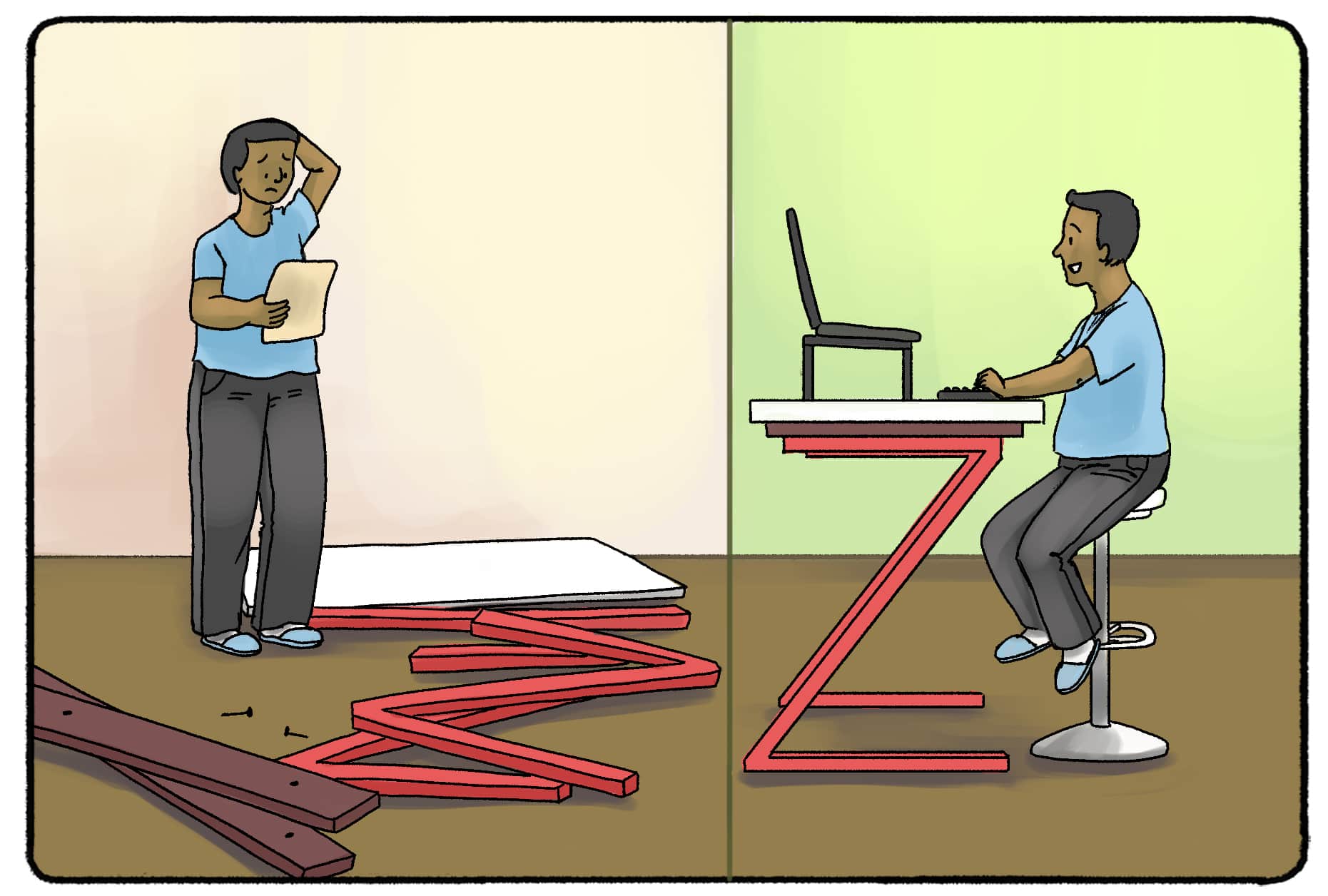
You might have high perceptual reasoning abilities if you can:
- Take a computer apart and put it back together
- Read a map or find your way around a neighborhood without assistance
- Estimate the distance between two objects with ease
- Assemble furniture quickly
- Draw or paint well
What Causes a Perceptual Reasoning Deficit?
Perceptual reasoning consists of two processes: taking in visual information and applying that information. If you notice a perceptual reasoning deficit in your child, they might be experiencing developmental delays in the parietal lobe, occipital lobe, and their neuronal networks. They may also be experiencing visual impairment. Seven out of ten students who have a learning disability when it comes to reading have a visual impairment. Visual impairments simply aren't uncommon, and their ability to interfere with perceptual reasoning and other skills aren't uncommon, either. One in four children has visual impairments that hold them back if unmanaged.
Signs that your child has a perceptual reasoning deficit include:
- Closing one eye while reading
- Breaking pencils often or struggling to hold utensils properly
- Messy handwriting or poorly aligned words on the page
- Experiencing trouble with cutting and pasting paper
- Inability to follow navigational directions
For some students, a trip to the eye doctor will improve their perceptual reasoning skills quickly. Other parents may need to take their children to the pediatrician for a closer look into their developmental delays.
How To Improve Perceptual Reasoning Skills
Children may also lack in perceptual reasoning skills simply because they haven't practiced them enough. It is not uncommon for schools to prioritize activities like reading and math over logic and perceptual reasoning. Parents should consider adding activities to their child's routine to observe their perceptual reasoning skills (and give them opportunity to practice.)
Want to improve your (or your child's) perceptual reasoning skills? Put them to the test! Use and build your perceptual reasoning skills by:
- Playing with puzzles (including 3D puzzles!)
- Learning origami
- Challenging your friend (or a computer) to a game of chess
- Building a model airplane
- Playing a video game like Tetris
- Using a physical map to get around a new city
- Communicating with a friend without words
- Trying a new sport or physical practice
Different Types of Intelligence
You may be considered intelligent if you can assemble furniture without minimal help. You may also be considered intelligent if you can read a book and put together a report on that book. And while educational standards may tell you that one of these skills is more important, they are still both valid types of intelligence.
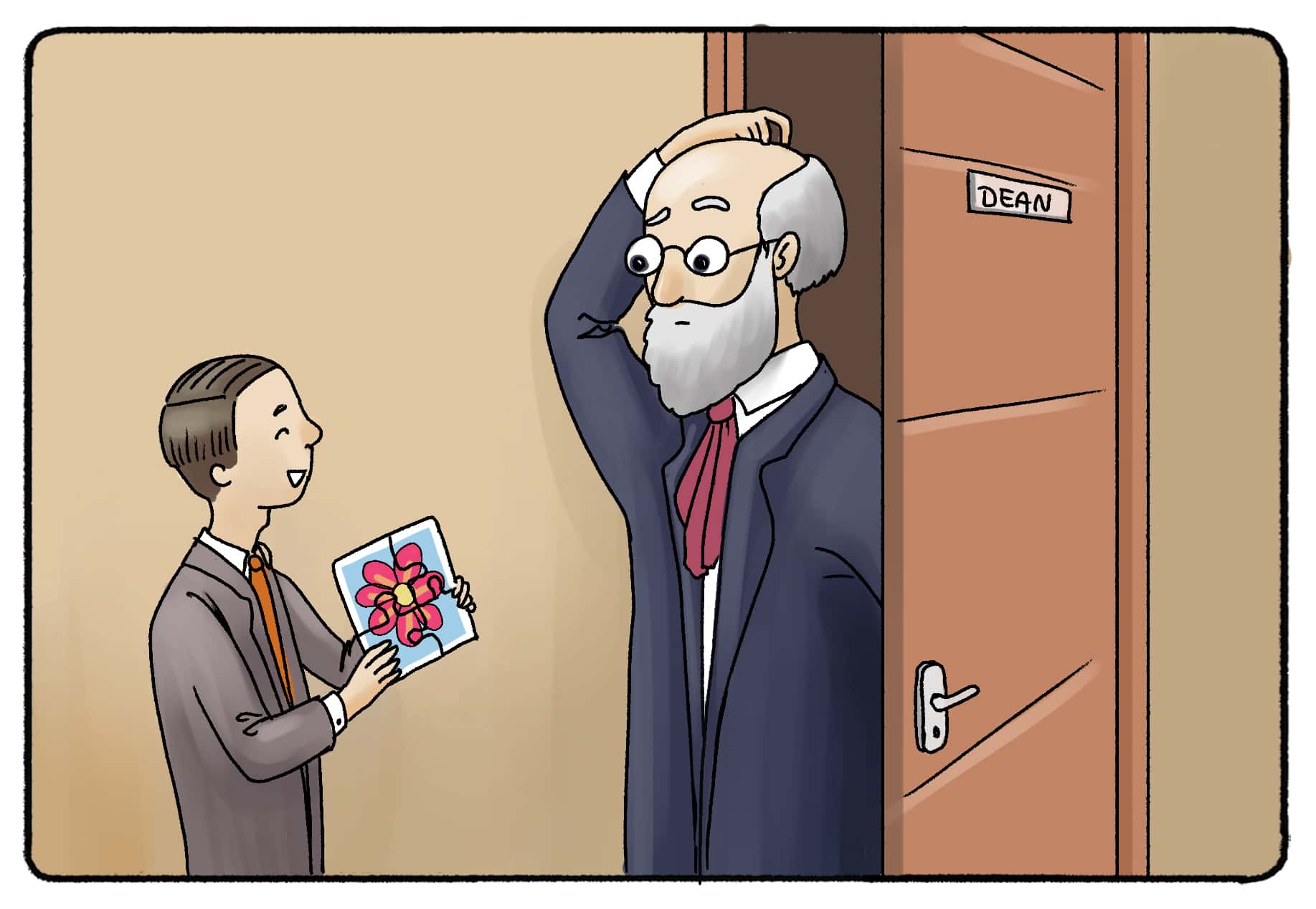
A few different educational psychologists have created theories around the idea of multiple intelligences. In 1938, Louis Thurnstone wrote that intelligence did not just come from one general ability. He listed seven “primary mental abilities,” including verbal comprehension, perceptual speed, and spatial visualization. Howard Gardener has provided a more up-to-date theory on multiple intelligences . Gardener listed a set of eight intelligences, including visual-spatial intelligence and verbal-linguistic intelligence.
The work of these psychologists and others has influenced the way that we measure intelligence and qualify someone as advanced or deficient in some areas.
Curious to know where you fall when it comes to perceptual reasoning? Fortunately, there are tests that measure these skills in adults and children. Use the WAIS-IV to assess your skills or your child's skills and see where you could support them in school and life.
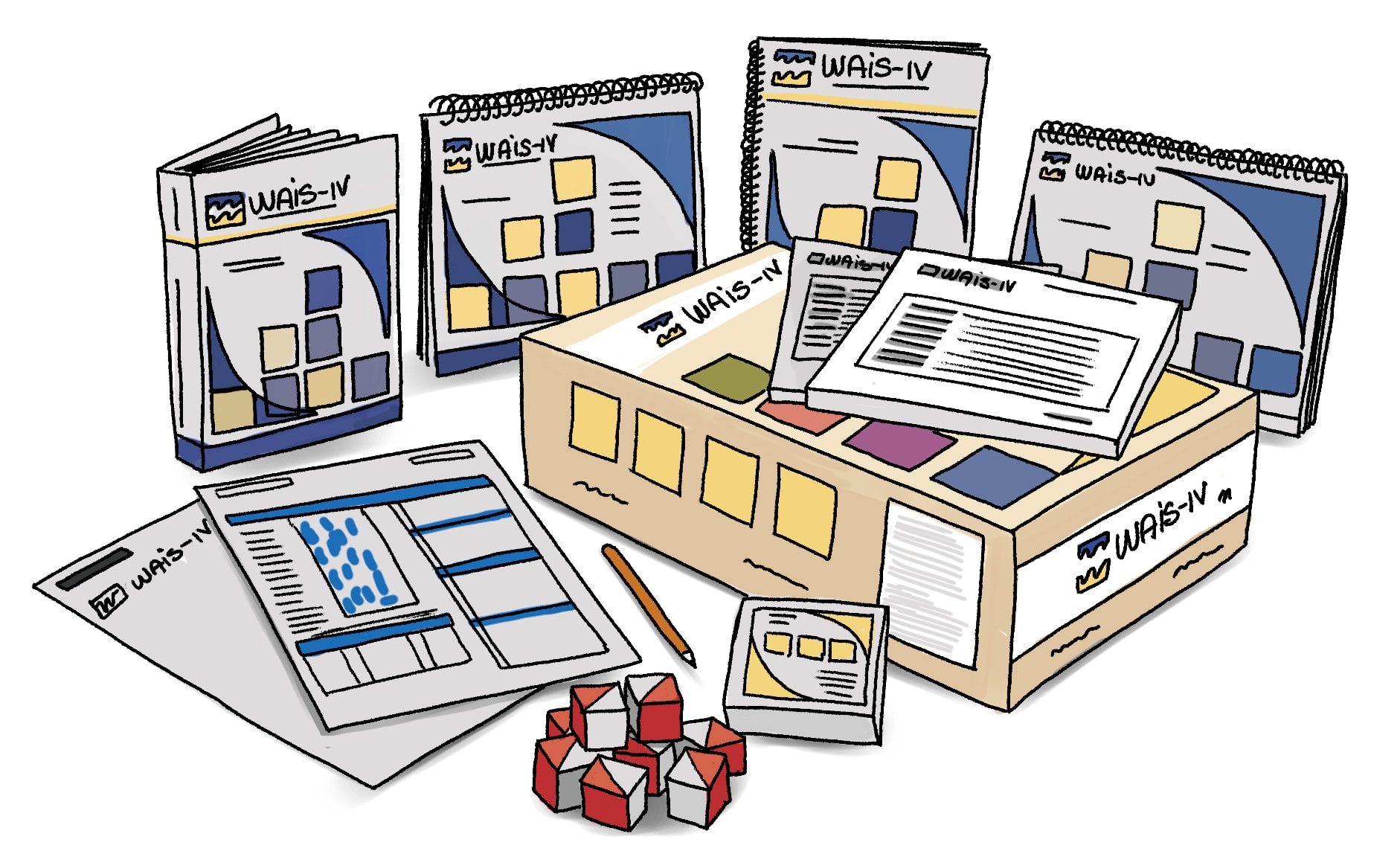
The Perceptual Reasoning Index Scale is one of the four subtests of the current Wechsler Adult Intelligence Scale (WAIS.) WAIS is an IQ test given to adults to measure their intelligence and cognitive abilities.
WAIS-IV, the current version of the test, is the first version that includes a “perceptual reasoning” scale. In earlier versions of the WAIS, “perceptual reasoning” was called “perceptual organization.”
To measure perceptual reasoning, participants are given three to five tasks:
- Block Design: Participants are given a model in a book constructed from red and white blocks. The participant must recreate the model using the blocks under a time constraint.
- Matrix Reasoning: Participants are given a set of pictures with one missing picture. Then, they are given a set of five additional pictures. Out of those five pictures, the participant must choose the missing picture.
- Visual Puzzles: Participants look at a puzzle in a book. Then, they are given a set of individual pieces. They choose which of those pieces would fit in the puzzle.
- Picture Completion: Similar to the Visual Puzzles task, participants must choose an image that completes a picture.
- Figure Weights: Participants are shown a picture of a scale with a set of shapes or images on one side of the scale. They choose from a set of images or shapes to “balance” out the scale.
Perceptual Reasoning tests, along with Working Memory, Verbal Comprehension, and Processing Speed tests, create a participant’s General Ability Index and Full Scale IQ scores.
Interpreting WAIS-IV Scores
Children who score low in all of these areas may be diagnosed with conditions like ADHD or Aspberger’s. Interestingly enough, children with high-functioning forms of these conditions often score very high on perceptual reasoning tests.
Perceptual Reasoning vs. Other Forms of Intelligence
While you may be able to find blocks on an IQ test , you might not see them in the classroom past preschool. College admissions officers don’t require students to put together puzzles in order to be accepted.
Our current education system values verbal reasoning over perceptual reasoning. Tests ask you to read and write before they ask you to construct a photo or find the missing puzzle piece. But verbal-linguistic intelligence is just one form of intelligence, according to Howard Gardner. Verbal comprehension and word fluency are just two skills that contribute to overall intelligence, according to Louis Thurstone.
With today’s testing, a student with high verbal comprehension skills may be considered highly intelligent, even if they have little perceptual reasoning abilities. Conversely, a student with visual and spatial intelligence may not get the same praise or recognition if they suffer on verbal and linguistic tests.
But as you read earlier on this page, these skills are crucial to solving certain problems and being successful in specific fields. You won’t always be given verbal directions. There are a lot of problems that you will need to solve by “doing.”
So don’t let a standardized test based on one type of intelligence tell you that you aren’t intelligent. Don’t let a standardized test based on one type of intelligence tell you that you’re more intelligent than someone else. Everyone has different abilities and holds different types of intelligence. Use a test like WAIS-IV to get a bigger picture of your intelligence. As you discover where your strengths lie, you will be able to find the best ways to learn and solve problems in your unique way.
How To Support Your Child With High Perceptual Reasoning Skills
If a child's strengths are not being validated at school, you should validate them at home. You may notice that your child struggles with math problems, but can build a skyscraper with minimal problems. They backseat drive, but they're always right when it comes to directions! Maybe their grades don't reflect how intelligent you know they are. Continue to support your child and nurture their skills. They will find, one day, that their strengths can help them establish a successful career!
Build your chore chart around organizational tasks: People with perceptual reasoning skills usually know how to make a space look nice. They have an eye for organization and even efficiency. When you create your child's chore chart, play to those strengths. Can they help you put away the groceries? Tidy up the counters? Arrange the dolls and toy room? You might find that your child enjoys these tasks more and is more motivated to get them done.
Let them enjoy games and choose camps that play to their strengths: Games like Tetris and puzzle games allow a child to further grow their perceptual reasoning skills. Allow your child to play these games or explore other forms of games. You might find that your child is particularly good at puzzles that you can't even solve! Sending your child to art camp may not be as helpful to your child's GPA as summer school, but it can help them explore skills and hobbies that they excel at!
Reassure them of their intelligence : A child with high perceptual reasoning skills may not feel as "smart" as the other kids. Why? Their grades tell them they're not. Talk to your child about the different forms of intelligence, and let them know there are other forms of intelligence outside of verbal.
Careers That Require High Perceptual Reasoning Skills
- Fashion designer
- Air traffic controller
- Graphic designer
The world needs people who can map out what is in front of them and see what other people can't. Perceptual reasoning is an important skill to have! Encourage your child and remember that not all tests of intelligence measure all types of intelligence.
Related posts:
- Free Online IQ Test (No Email + 5 Mins + Instant Results)
- Where is the Primary Visual Cortex Located?
- Inductive Reasoning (Definition + Examples)
- Perceptual Learning (Definition + Examples)
- Perceptual Adaptation (Definition + Examples)
Reference this article:
About The Author

Free Personality Test

Free Memory Test

Free IQ Test

PracticalPie.com is a participant in the Amazon Associates Program. As an Amazon Associate we earn from qualifying purchases.
Follow Us On:
Youtube Facebook Instagram X/Twitter
Psychology Resources
Developmental
Personality
Relationships
Psychologists
Serial Killers
Psychology Tests
Personality Quiz
Memory Test
Depression test
Type A/B Personality Test
© PracticalPsychology. All rights reserved
Privacy Policy | Terms of Use
5.6 The Gestalt Principles of Perception
Learning objectives.
By the end of this section, you will be able to:
- Explain the figure-ground relationship
- Define Gestalt principles of grouping
- Describe how perceptual set is influenced by an individual’s characteristics and mental state
In the early part of the 20th century, Max Wertheimer published a paper demonstrating that individuals perceived motion in rapidly flickering static images—an insight that came to him as he used a child’s toy tachistoscope. Wertheimer, and his assistants Wolfgang Köhler and Kurt Koffka, who later became his partners, believed that perception involved more than simply combining sensory stimuli. This belief led to a new movement within the field of psychology known as Gestalt psychology. The word gestalt literally means form or pattern, but its use reflects the idea that the whole is different from the sum of its parts. In other words, the brain creates a perception that is more than simply the sum of available sensory inputs, and it does so in predictable ways. Gestalt psychologists translated these predictable ways into principles by which we organize sensory information. As a result, Gestalt psychology has been extremely influential in the area of sensation and perception (Rock & Palmer, 1990).
Gestalt perspectives in psychology represent investigations into ambiguous stimuli to determine where and how these ambiguities are being resolved by the brain. They are also aimed at understanding sensory and perception as processing information as groups or wholes instead of constructed wholes from many small parts. This perspective has been supported by modern cognitive science through fMRI research demonstrating that some parts of the brain, specifically the lateral occipital lobe, and the fusiform gyrus, are involved in the processing of whole objects, as opposed to the primary occipital areas that process individual elements of stimuli (Kubilius, Wagemans & Op de Beeck, 2011).
One Gestalt principle is the figure-ground relationship. According to this principle, we tend to segment our visual world into figure and ground. Figure is the object or person that is the focus of the visual field, while the ground is the background. As the figure below shows, our perception can vary tremendously, depending on what is perceived as figure and what is perceived as ground. Presumably, our ability to interpret sensory information depends on what we label as figure and what we label as ground in any particular case, although this assumption has been called into question (Peterson & Gibson, 1994; Vecera & O’Reilly, 1998).

The concept of figure-ground relationship explains why this image can be perceived either as a vase or as a pair of faces.
Another Gestalt principle for organizing sensory stimuli into meaningful perception is proximity . This principle asserts that things that are close to one another tend to be grouped together, as the figure below illustrates.
The Gestalt principle of proximity suggests that you see (a) one block of dots on the left side and (b) three columns on the right side.
How we read something provides another illustration of the proximity concept. For example, we read this sentence like this, notl iket hiso rt hat. We group the letters of a given word together because there are no spaces between the letters, and we perceive words because there are spaces between each word. Here are some more examples: Cany oum akes enseo ft hiss entence? What doth es e wor dsmea n?
We might also use the principle of similarity to group things in our visual fields. According to this principle, things that are alike tend to be grouped together (figure below). For example, when watching a football game, we tend to group individuals based on the colors of their uniforms. When watching an offensive drive, we can get a sense of the two teams simply by grouping along this dimension.
When looking at this array of dots, we likely perceive alternating rows of colors. We are grouping these dots according to the principle of similarity.
Two additional Gestalt principles are the law of continuity (or good continuation) and closure. The law of continuity suggests that we are more likely to perceive continuous, smooth flowing lines rather than jagged, broken lines (figure below). The principle of closure states that we organize our perceptions into complete objects rather than as a series of parts (figure below).
Good continuation would suggest that we are more likely to perceive this as two overlapping lines, rather than four lines meeting in the center.
Closure suggests that we will perceive a complete circle and rectangle rather than a series of segments..
According to Gestalt theorists, pattern perception, or our ability to discriminate among different figures and shapes, occurs by following the principles described above. You probably feel fairly certain that your perception accurately matches the real world, but this is not always the case. Our perceptions are based on perceptual hypotheses: educated guesses that we make while interpreting sensory information. These hypotheses are informed by a number of factors, including our personalities, experiences, and expectations. We use these hypotheses to generate our perceptual set. For instance, research has demonstrated that those who are given verbal priming produce a biased interpretation of complex ambiguous figures (Goolkasian & Woodbury, 2010).
Template Approach
Ulrich Neisser (1967), author of one of the first cognitive psychology textbook suggested pattern recognition would be simplified, although abilities would still exist, if all the patterns we experienced were identical. According to this theory, it would be easier for us to recognize something if it matched exactly with what we had perceived before. Obviously the real environment is infinitely dynamic producing countless combinations of orientation, size. So how is it that we can still read a letter g whether it is capitalized, non-capitalized or in someone else hand writing? Neisser suggested that categorization of information is performed by way of the brain creating mental templates , stored models of all possible categorizable patterns (Radvansky & Ashcraft, 2014). When a computer reads your debt card information it is comparing the information you enter to a template of what the number should look like (has a specific amount of numbers, no letters or symbols…). The template view perception is able to easily explain how we recognize pieces of our environment, but it is not able to explain why we are still able to recognize things when it is not viewed from the same angle, distance, or in the same context.
In order to address the shortfalls of the template model of perception, the feature detection approach to visual perception suggests we recognize specific features of what we are looking at, for example the straight lines in an H versus the curved line of a letter C. Rather than matching an entire template-like pattern for the capital letter H, we identify the elemental features that are present in the H. Several people have suggested theories of feature-based pattern recognition, one of which was described by Selfridge (1959) and is known as the pandemonium model suggesting that information being perceived is processed through various stages by what Selfridge described as mental demons, who shout out loud as they attempt to identify patterns in the stimuli. These pattern demons are at the lowest level of perception so after they are able to identify patterns, computational demons further analyze features to match to templates such as straight or curved lines. Finally at the highest level of discrimination, cognitive demons which allow stimuli to be categorized in terms of context and other higher order classifications, and the decisions demon decides among all the demons shouting about what the stimuli is which while be selected for interpretation.
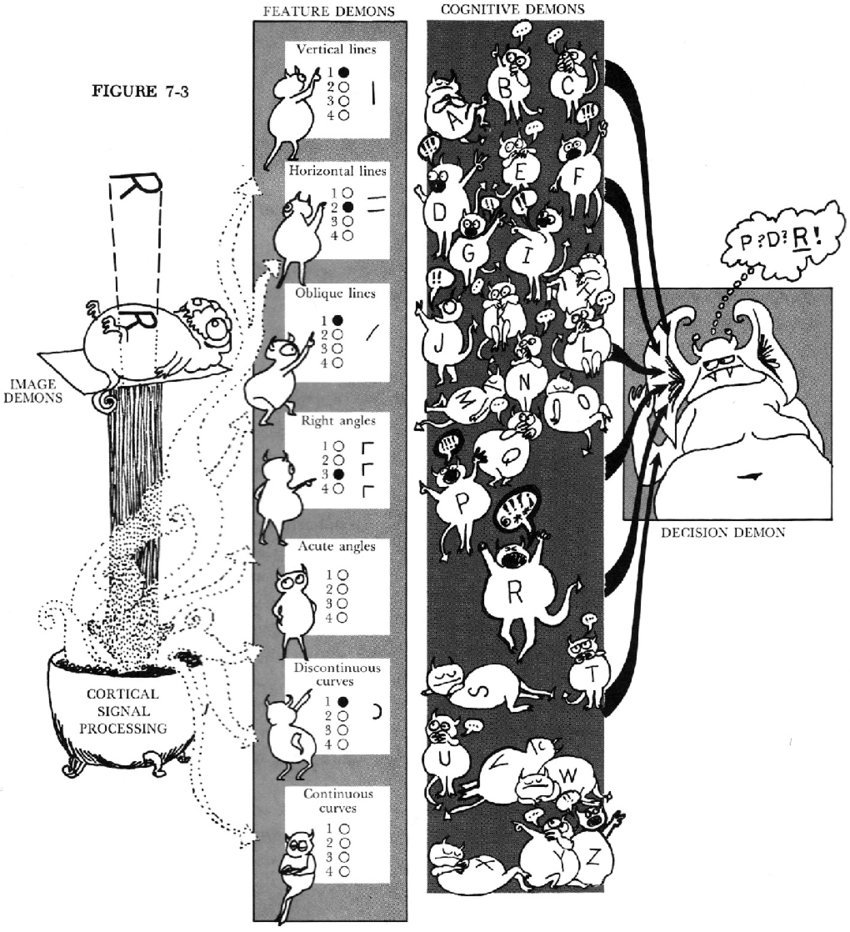
Selfridge’s pandemonium model showing the various levels of demons which make estimations and pass the information on to the next level before the decision demon makes the best estimation to what the stimuli is. Adapted from Lindsay and Norman (1972).
Although Selfridges ideas regarding layers of shouting demons that make up our ability to discriminate features of our environment, the model actually incorporates several ideas that are important for pattern recognition. First, at its foundation, this model is a feature detection model that incorporates higher levels of processing as the information is processed in time. Second, the Selfridge model of many different shouting demons incorporates ideas of parallel processing suggesting many different forms of stimuli can be analyzed and processed to some extent at the same time. Third and finally, the model suggests that perception in a very real sense is a series of problem solving procedures where we are able to take bits of information and piece it all together to create something we are able to recognize and classify as something meaningful.
In addition to sounding initially improbable by being based on a series of shouting fictional demons, one of the main critiques of Selfridge’s demon model of feature detection is that it is primarily a bottom-up , or data-driven processing system. This means the feature detection and processing for discrimination all comes from what we get out of the environment. Modern progress in cognitive science has argued against strictly bottom-up processing models suggesting that context plays an extremely important role in determining what you are perceiving and discriminating between stimuli. To build off previous models, cognitive scientist suggested an additional top-down , or conceptually-driven account in which context and higher level knowledge such as context something tends to occur in or a persons expectations influence lower-level processes.
Finally the most modern theories that attempt to describe how information is processed for our perception and discrimination are known as connectionist models. Connectionist models incorporate an enormous amount of mathematical computations which work in parallel and across series of interrelated web like structures using top-down and bottom-up processes to narrow down what the most probably solution for the discrimination would be. Each unit in a connectionist layer is massively connected in a giant web with many or al the units in the next layer of discrimination. Within these models, even if there is not many features present in the stimulus, the number of computations in a single run for discrimination become incredibly large because of all the connections that exist between each unit and layer.
The Depths of Perception: Bias, Prejudice, and Cultural Factors
In this chapter, you have learned that perception is a complex process. Built from sensations, but influenced by our own experiences, biases, prejudices, and cultures , perceptions can be very different from person to person. Research suggests that implicit racial prejudice and stereotypes affect perception. For instance, several studies have demonstrated that non-Black participants identify weapons faster and are more likely to identify non-weapons as weapons when the image of the weapon is paired with the image of a Black person (Payne, 2001; Payne, Shimizu, & Jacoby, 2005). Furthermore, White individuals’ decisions to shoot an armed target in a video game is made more quickly when the target is Black (Correll, Park, Judd, & Wittenbrink, 2002; Correll, Urland, & Ito, 2006). This research is important, considering the number of very high-profile cases in the last few decades in which young Blacks were killed by people who claimed to believe that the unarmed individuals were armed and/or represented some threat to their personal safety.
Gestalt theorists have been incredibly influential in the areas of sensation and perception. Gestalt principles such as figure-ground relationship, grouping by proximity or similarity, the law of good continuation, and closure are all used to help explain how we organize sensory information. Our perceptions are not infallible, and they can be influenced by bias, prejudice, and other factors.
References:
Openstax Psychology text by Kathryn Dumper, William Jenkins, Arlene Lacombe, Marilyn Lovett and Marion Perlmutter licensed under CC BY v4.0. https://openstax.org/details/books/psychology
Review Questions:
1. According to the principle of ________, objects that occur close to one another tend to be grouped together.
a. similarity
b. good continuation
c. proximity
2. Our tendency to perceive things as complete objects rather than as a series of parts is known as the principle of ________.
d. similarity
3. According to the law of ________, we are more likely to perceive smoothly flowing lines rather than choppy or jagged lines.
4. The main point of focus in a visual display is known as the ________.
b. perceptual set
Critical Thinking Question:
1. The central tenet of Gestalt psychology is that the whole is different from the sum of its parts. What does this mean in the context of perception?
2. Take a look at the following figure. How might you influence whether people see a duck or a rabbit?

Personal Application Question:
1. Have you ever listened to a song on the radio and sung along only to find out later that you have been singing the wrong lyrics? Once you found the correct lyrics, did your perception of the song change?
figure-ground relationship
Gestalt psychology
- good continuation
pattern perception
perceptual hypothesis
principle of closure
Key Takeaways
1. This means that perception cannot be understood completely simply by combining the parts. Rather, the relationship that exists among those parts (which would be established according to the principles described in this chapter) is important in organizing and interpreting sensory information into a perceptual set.
2. Playing on their expectations could be used to influence what they were most likely to see. For instance, telling a story about Peter Rabbit and then presenting this image would bias perception along rabbit lines.
closure: organizing our perceptions into complete objects rather than as a series of parts
figure-ground relationship: segmenting our visual world into figure and ground
Gestalt psychology: field of psychology based on the idea that the whole is different from the sum of its parts
good continuation: (also, continuity) we are more likely to perceive continuous, smooth flowing lines rather than jagged, broken lines
pattern perception: ability to discriminate among different figures and shapes
perceptual hypothesis: educated guess used to interpret sensory information
principle of closure: organize perceptions into complete objects rather than as a series of parts
proximity: things that are close to one another tend to be grouped together
similarity: things that are alike tend to be grouped together
Review Questions
According to the principle of ________, objects that occur close to one another tend to be grouped together.
Our tendency to perceive things as complete objects rather than as a series of parts is known as the principle of ________.
According to the law of ________, we are more likely to perceive smoothly flowing lines rather than choppy or jagged lines.
The main point of focus in a visual display is known as the ________.
- perceptual set

Critical Thinking Question
The central tenet of Gestalt psychology is that the whole is different from the sum of its parts. What does this mean in the context of perception?
Take a look at the following figure. How might you influence whether people see a duck or a rabbit?
Answer: Playing on their expectations could be used to influence what they were most likely to see. For instance, telling a story about Peter Rabbit and then presenting this image would bias perception along rabbit lines.
Personal Application Question
Have you ever listened to a song on the radio and sung along only to find out later that you have been singing the wrong lyrics? Once you found the correct lyrics, did your perception of the song change?

Share This Book
- Increase Font Size

For creative problem solving, bust these 6 perceptual blocks
Often one of the main barriers to solving a problem is an inability to see the problem in a way that is likely to spark solutions. A source I return to again and again to help me with creative problem solving is James Adams’ Conceptual Blockbusting: A Guide to Better Ideas .
Here are six perceptual blocks Adams identifies along with the information that can help us bust through them:
1. Seeing What You Expect to See – Stereotyping
Recently I encountered a scene familiar to any parent: I came home to find that the chairs in my living room and dining room had been converted – with the aid of a blanket – into a house by my five-year old. These were no mere chairs in his eyes: they were building materials for an entire fantasy world.
Kids provide a constant reminder of how easily we acquire perceptual blocks as we grow older. To a large extent, this isn’t a bad thing: we have to be able to rely on certain preconceptions, assumptions, and even stereotypes about the world around us in order to make sense of things quickly and get through our daily lives.
Problems arise, however, when (a) the foundations for our preconceptions are faulty, and/or (b) we operate on autopilot and don’t periodically test our preconceptions. As I argue frequently on Mission to Learn, cultivating consciousness and a propensity to ask questions is essential for effective learning. They are also essential for problem solving – which, after all, is a learning process.
If you find yourself facing a tough problem, step back a bit and consider whether any preconceptions or stereotypes you hold may be interfering with your ability to find solutions.
2. Difficulty in Isolating the Problem
Sometimes we know there is a problem, but we’re not sure what it is. If you plant a seed in your garden, for example, the expected outcome is that a plant will grow. If it doesn’t, then you have a problem, but the nature of the problem may not be immediately clear. Was the seed bad? Is the soil too acidic? Did you not water enough? Did a bird or squirrel dig up the seed? Often we jump too quickly to an answer to define the problem – e.g., “The seeds I bought are bad” – and end up investing in unnecessary and sometimes costly solutions – e.g., buying new seeds.
We’d be better served by pulling back, looking at the larger objective – which would seem to be successfully growing a plant – and then investigating and experimenting as needed to determine the real problem. Are there tell-tale scratches and holes around where the seed was planted? Have nearby seeds grown successfully, and what was different about how they were tended?
This is a simple example, but a little bit of footwork can go a long way in isolating problems of any size.
3. Defining the Problem Area Too Narrowly
I run into this one all the time in consulting . A prospective client will call up and say something along the lines of “We need you to find a learning management system for us.” A key question to ask in this situation, or in any situation where a solution has been proposed but the desired objective is not clear is … wait for it … Why?
Go back to the gardening problem above. I noted that the objective here seems to be growing a plant. But what if a perceptual block is presenting us from seeing the real objective was to get more fresh vegetables into your diet?
In that case, growing plants is only one of many options. You might also, for example, consider making a trip to the farmers market a part of your weekly routine. Or maybe join a local CSA . If you don’t have the problem defined correctly in the first place, you will completely miss these options.
To help illustrate how we often perceive the problem area too narrowly, Adams’ uses the classic nine dots puzzle . If you haven’t done this before (or even if you have), try connecting the nine dots below using only four lines and without lifting your finger from the screen.
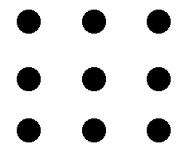
(You can view one popular solution to the nine dots problem here . Adams offers a number of others in his book.)
4. Inability to see the problem from various viewpoints
An ability to see a problem from the viewpoint of everyone the problem impacts not only helps with arriving at consensus around the solution, it can also help greatly in conceptualizing the problem and overcoming some of the barriers already noted. Simply put, when we have to step outside of our own viewpoint, we are bound to see the problem differently, possibly define it differently, and develop different options for solving it than we would when relying solely on our own preconceptions and biases.
Adams notes that “The architect must view the design of his buildings from the perspectives of his clients, his builders, suppliers, architectural critics, and others in his profession as well as his own.” I like the “architect” metaphor both for the reason Adams suggests and because it implies thoughtfully designing solutions to problems rather than defaulting to knee-jerk options.
Next time you are faced with a complex, challenging problem, perhaps think of yourself as a solution architect.
5. Saturation
Many years ago in grad school I spent an inexplicable amount of time studying avant-garde poetry and art. A common refrain across nearly any avant-garde group in any part of the world is “Make it new!” The driving idea behind this refrain is that we tend to lock in on familiar elements of the things around us, and after a while, we begin to ignore them to the point that we can’t really even recall them in any great detail, much less fully appreciate them.
Try, for example, to draw the heads side of a penny (or a coin in the currency of your country). Don’t worry about your artistic skills, just focus on details like whether you are able to face Lincoln’s head in the right direction or put the right text on the drawing. Chances are high you will make mistakes and leave some things out. It’s too familiar for your to “see” it clearly.
Avante garde artist know that the way to shake up our saturated minds and bust through perecptual blocks is to “defamiliarize” things and help us look at them afresh. This results in things like slapping a mustache on the Mona Lisa. (See the image at the beginning of this post.) By doing this, Marcel Duchamp shocked viewers into seeing the iconic Da Vinci painting with fresh eyes. So, the next time you are faced with a perplexing problem, it may be worth asking “How can I slap a mustache on this thing?”
6. Failure to utilize all sensory inputs
Often when attempting to solve a problem the solution is right in front of us, but we fail to perceive it. This may be because we are using the wrong senses. We might be looking, for example, when we should be listening or smelling. If you want some excellent exposure to and practice in using all senses for solving problems, I highly recommend reading Sherlock Holmes. Sir Arthur Conan Doyle’s venerable consulting detective often uses multiple senses in getting to the root of mysteries that flummox everyone else. Take, for example, the story “Silver Blaze” in which (a) the fact that a dog did not bark (hearing), and (b) that spicy food was used to mask the taste opium (taste) factor significantly into Holmes solving the case.
When wrestling with a tough problem or trying to develop ideas, take a moment to consider whether you are taking all sense into account. Sometimes it may help to block off one or more senses – for example, simply closing your eyes – in order to become more aware of what the other senses might reveal. As Adams’ puts it, “Problem-solvers need all the help they can get. They should therefore be careful not to neglect any sensory inputs.”
So, those are Adams’ six “blocks” (the gloss on each is my own, other than where Adams’ is quoted). H ow have you overcome some of the blocks described here in your creative problem solving and innovation efforts? Are there other important blocks you think need to be highlighted? Please comment and share your thoughts.
Related Posts

Health and Learning: What the Science Says

Navigating Controversial Topics: How Policy Wonks Do It

5 Top Minimalist Productivity Apps for Lifelong Learners
Leave a comment.
Your email address will not be published. Required fields are marked *
(Stanford users can avoid this Captcha by logging in.)
- Send to text email RefWorks EndNote printer
Conceptual blockbusting : a guide to better ideas
Available online, at the library.

Law Library (Crown)
More options.
- Find it at other libraries via WorldCat
- Contributors
Description
Creators/contributors, contents/summary.
- Perceptual blocks
- Emotional blocks
- Cultural and environmental blocks
- Intellectual and expressive blocks
- Alternate thinking languages
- Kinds of blockbusters
- Organizations.
Bibliographic information
Browse related items.
- Stanford Home
- Maps & Directions
- Search Stanford
- Emergency Info
- Terms of Use
- Non-Discrimination
- Accessibility
© Stanford University , Stanford , California 94305 .
- Media Center
Perceptual Barriers
The basic idea, theory, meet practice.
TDL is an applied research consultancy. In our work, we leverage the insights of diverse fields—from psychology and economics to machine learning and behavioral data science—to sculpt targeted solutions to nuanced problems.
Have you ever felt like you were treated differently because of how someone expected you to behave? Perhaps your education at a top-tier university made you a victim of a higher workload at the office. Or maybe a certain coworker thought you’d oppose their new project proposal because of an issue you raised with their last big idea.
More often than not, these kinds of preconceived notions lead to roadblocks in communication, workflow standstills, and a general dissonance from person to person.
While some barriers to communication are more obvious, like language differences and physical obstructions, perceptual barriers are harder to spot. They reflect an internal perception about something going on externally and can significantly affect how we communicate with others. 1
The way we carry ourselves, our body language and gestures, our socioeconomic backgrounds, personal beliefs and tendencies are all common sources of bias that create perceptual barriers which hinder our ability to relate to one another. With that in mind, it’s helpful to be aware of these kinds of hurdles to communication and to locate ways to overcome them.
One of the major blocks to interpersonal communication lies in our very natural tendency to judge–to approve or disapprove of the statements of the other person. – Carl Rogers
Cognitive Bias : A subconscious, systematic deviation from rationality in judgment-making that arises from problems related to memory, attention, and other mental mistakes. 2
Humanism : A movement in psychology that emphasizes studying the individual holistically and emphasizing their uniqueness. This perspective stresses concepts of free-will, self-actualization and self-efficacy. 3,4
Halo Effect : A form of cognitive bias that happens when we transfer our feelings about one attribute of a person’s character to another, often unrelated, trait. This can happen when our initial impression of one trait (“she is pretty!”) is unduly projected onto our overall impression of a person (“she is friendly!”). 5
Carl Rogers
Carl Rogers was an American psychologist of the 20th century, a founding father of humanistic psychology, and an eminent figure in psychotherapy. He pioneered the person-centered approach to therapy, which focused on recognizing the patient’s self-actualizing tendency, defined as an embedded proclivity of every individual to strive for growth, autonomy, and freedom from peripheral sources of power. 6
Rogers believed that the whole task of psychotherapy is to help individuals achieve, through a special relationship with their therapist, good communication within himself or herself. Once this is achieved, Rogers held, then that person would be able to communicate more freely and effectively with others. 7
The natural urge to judge or evaluate others exists within all of us, Rogers contended. And moreover, that urge is exacerbated in situations where emotions and feelings are stronger. To combat these evaluative and prejudiced tendencies, Rogers strongly supported listening with understanding; seeing the supposed attitude, idea, or belief that we perceive about another person from their point of view. Doing so, Rogers claimed, can allow us to better sense how our preconceptions might feel to the other person and subsequently enhance the way we communicate in the future. 8
Perceptual barriers are a result of a certain type of cognitive bias, a term used to describe our systematic but inconsistent patterns of responses to judgment and decision problems. The idea of cognitive bias was introduced by psychologists Amos Tversky and Daniel Kahneman in the 1970s, and has since grown exponentially in use to encapsulate dozens of more specific forms of bias. 9
The five cognitive biases that most contribute to perceptual barriers include: stereotypes , the halo effect , selective participation, projection , and expectations.
Selective participation entails paying attention to information that supports your ideas and ignoring the rest. If you’re having issues with your supervisor, selective participation might involve assessing only their negative personality traits and ignoring any good qualities that would be inconsistent with your preexisting beliefs about them. Selective participation can also reflect in perceptual defense, our mechanism of defense against ideas and conceptions that threaten our belief system. A smoker averting their attention away from the harmful effects warning on a cigarette package is an example of this tendency. 10
The halo effect is another common impetus to perceptual barriers; it was first observed by American psychologist Edward Thorndike and described in his 1920 article, A Constant Error in Psychological Ratings . 11 In his study of the US military’s ranking system, officers were asked to rank their subordinates based on character traits. Thorndike found that the subordinates’ physical appearance highly correlated with evaluation of traits like intelligence, competence, and skill. 12
Stereotyping can also create hindrances in perception; widely-held generalizations about people can influence us to assign attributes to individuals solely on the basis of the category in which we perceive them. Most likely to occur when we meet new people, stereotypes can skew our first impressions of someone’s character on the basis of unrelated attributes like sex, race, or age. 13
Controversy
A study on stereotyping of older employees in an organization found that they are assumed to be more defiant to organizational change, less creative or likely to take calculated risks, ranked worse in physical capacity, and both less interested and capable of learning new techniques. 14 Tasked with making decisions regarding personnel assignments, business students participating in the study gave older people less consideration in promotional opportunities, and received less attention for training.
The halo effect can also conjure sizable obstructions to effective decision-making and communication; it can lead to unfair differences in how employees are treated, disparities in disciplinary violations, and can even take effect during the hiring process. If a candidate is favored because of it, it could result in a biased hiring process. 15
Consequences
The preconceived ideas mentioned above can have serious implications on the way we communicate with one another. By failing to competently perceive others based on such prejudices, we create filters to the ways we interpret information and relay it in conversation.
Seeking clarity is one helpful tactic that can minimize the harms of perceptual barriers.If you are unclear about expectations or preferences of another person in an interaction, confusion can manifest and provoke our perceptual biases to kick in. The key to overcoming a lack of clarity is asking questions to ensure that you and the other person are on the same page. 16
Perceptual barriers can present significant strife for minority individuals both in and out of the workplace. Individuals dealing with disabilities, for instance, are often posed with challenges when deciding whether to pursue opportunities more readily available to the public.
A study done in 2019 by Erin Ludwig of the Corcoran College of Art and Design explored how disabled people are swayed by stigma when deciding whether to patronize arts organizations. Ludwig sought to understand whether attitudinal barriers to participation, beyond the traditional structural and architectural barriers, affected how likely such individuals were to be interested and join art activities. 17 The participant pool consisted of an array of 28 arts organizations throughout the state of New Jersey, who responded to the study’s initial survey, followed by 50 handicapped individuals responding to the second survey round.
While forms of basic accessibility are accessible at most organizations as necessitated (like ramps, sign language interpretations, wheel-chair friendly bathrooms), the study sought to determine whether these organizations are aware of the attitudinal barriers and social needs of their disabled patrons. Through the initial survey, respondent organizations were “highly optimistic about the lack of stigma in their organizations”, with 93% of respondents indicating that they have written policies on accessibility for disabled individuals in place. 18
The second round of survey data reflected a different story; nearly half of disabled patrons stated they agreed or completely agreed with the idea that “stigma (in a participatory context) was sometimes harder to overcome than physical or program-related barriers.” 19 Ludwig found this stigma affects individuals even if they have not personally experienced some form of discrimination, implying that self-stigmatization occurs simply from the individuals’ recognition of being part of a stigmatized group. This in turn dissuades disabled patrons from engaging in situations where they feel there are potential stigmatizers, like arts organization staffers.
Ludwig suggests that promoting training on the causal effects of attitudinal barriers for people with disabilities can go a long way for participation in arts organizations. Moreover, learning about aspects of disability that staff may not be familiar with, like the fact that it is commonplace to be uncomfortable in initial interactions dealing with patrons with disabilities, can be a huge step to bridging the gap between stigma and reality. 20
Related TDL Content
Self-Perception Theory
Part of being cognizant of perceptual barriers is reflecting on our own behavior. Self-Perception Theory explains how we become aware of certain predispositions and attitudes by observing our own behavior.
The Halo Effect in Consumer Perception: Why Small Details Can Make a Big Difference
The Halo Effect is one of the prominent instigators to perceptual barriers in our everyday lives. In consumption, the Halo Effect plays a major role in how we perceive products, both at the brand and product level.
- Herman, C. (2019, June 18). How to Eliminate Perceptual Barriers. Bizfluent. https://bizfluent.com/how-8483270-eliminate-perceptual-barriers.html
- Ruhl, C. (2021, May 4). What is cognitive bias? Study Guides for Psychology Students – Simply Psychology. https://www.simplypsychology.org/cognitive-bias.html
- Cherry, K. (2020, July 20). How humanistic theories are used in psychology. Verywell Mind. https://www.verywellmind.com/what-is-humanistic-psychology-2795242
- Britannica, T. Editors of Encyclopaedia (Invalid Date). humanistic psychology. Encyclopedia Britannica. https://www.britannica.com/science/humanistic-psychology
- Perera, A. (2021, March 22). Halo effect: Definition and examples. Study Guides for Psychology Students – Simply Psychology. https://www.simplypsychology.org/halo-effect.html
- Schunk, D. H. (2016). Learning theories: An educational perspective. Pearson.
- Rogers, C., & Roethlisberger, B. (1991, November 1). Barriers and gateways to communication. Harvard Business Review. https://hbr.org/1991/11/barriers-and-gateways-to-communication
- Wilke, A., & Mata, R. (2012). Cognitive bias. In Encyclopedia of human behavior (pp. 531-535). Academic Press.
- Dolan, S, & Lingham, T. (2021). Introduction to International Organizational Behavior (2nd ed.). MyEducator. 2.10
- Black, J. S., Bright, D. S., & Gardner, D. G. (2019). Organizational behavior. OpenStax. https://openstax.org/books/organizational-behavior/pages/3-2-barriers-to-accurate-social-perception
- C. von Hippel, et al, “Age-based stereotype threat and work outcomes: Stress appraisals and ruminations as mediators,” Psychology and Aging, February 2019, pp. 68-84.
- Miller, B. (2018, October 1). How the halo effect impacts your workplace. HR Daily Advisor. https://hrdailyadvisor.blr.com/2018/10/02/how-the-halo-effect-impacts-your-workplace/
- Dopico, A. (2019, September 24). How do you overcome perceptual barriers? JanetPanic.com – World History Portal. https://janetpanic.com/how-do-you-overcome-perceptual-barriers/
- Ludwig, E. (2012). Stigma in the arts: How perceptual barriers influence individuals’ with disabilities participation in arts organizations. The Journal of Arts Management, Law, and Society , 42 (3), 142
- Ludwig, E. (2012). Stigma in the arts: How perceptual barriers influence individuals’ with disabilities participation in arts organizations. The Journal of Arts Management, Law, and Society , 42 (3), 143
- Ludwig, E. (2012). Stigma in the arts: How perceptual barriers influence individuals’ with disabilities participation in arts organizations. The Journal of Arts Management, Law, and Society , 42 (3), 145
- Ludwig, E. (2012). Stigma in the arts: How perceptual barriers influence individuals’ with disabilities participation in arts organizations. The Journal of Arts Management, Law, and Society , 42 (3), 149
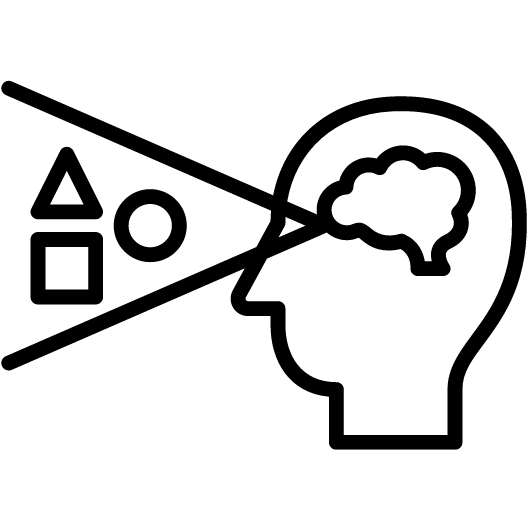
Mental Models

Conversion Funnel

Eager to learn about how behavioral science can help your organization?
Get new behavioral science insights in your inbox every month..


Thinking and Intelligence
Pitfalls to Problem Solving
Learning objectives.
- Explain some common roadblocks to effective problem solving
Not all problems are successfully solved, however. What challenges stop us from successfully solving a problem? Albert Einstein once said, “Insanity is doing the same thing over and over again and expecting a different result.” Imagine a person in a room that has four doorways. One doorway that has always been open in the past is now locked. The person, accustomed to exiting the room by that particular doorway, keeps trying to get out through the same doorway even though the other three doorways are open. The person is stuck—but she just needs to go to another doorway, instead of trying to get out through the locked doorway. A mental set is where you persist in approaching a problem in a way that has worked in the past but is clearly not working now. Functional fixedness is a type of mental set where you cannot perceive an object being used for something other than what it was designed for. During the Apollo 13 mission to the moon, NASA engineers at Mission Control had to overcome functional fixedness to save the lives of the astronauts aboard the spacecraft. An explosion in a module of the spacecraft damaged multiple systems. The astronauts were in danger of being poisoned by rising levels of carbon dioxide because of problems with the carbon dioxide filters. The engineers found a way for the astronauts to use spare plastic bags, tape, and air hoses to create a makeshift air filter, which saved the lives of the astronauts.
Link to Learning
Check out this Apollo 13 scene where the group of NASA engineers are given the task of overcoming functional fixedness.
Researchers have investigated whether functional fixedness is affected by culture. In one experiment, individuals from the Shuar group in Ecuador were asked to use an object for a purpose other than that for which the object was originally intended. For example, the participants were told a story about a bear and a rabbit that were separated by a river and asked to select among various objects, including a spoon, a cup, erasers, and so on, to help the animals. The spoon was the only object long enough to span the imaginary river, but if the spoon was presented in a way that reflected its normal usage, it took participants longer to choose the spoon to solve the problem. (German & Barrett, 2005). The researchers wanted to know if exposure to highly specialized tools, as occurs with individuals in industrialized nations, affects their ability to transcend functional fixedness. It was determined that functional fixedness is experienced in both industrialized and nonindustrialized cultures (German & Barrett, 2005).
In order to make good decisions, we use our knowledge and our reasoning. Often, this knowledge and reasoning is sound and solid. Sometimes, however, we are swayed by biases or by others manipulating a situation. For example, let’s say you and three friends wanted to rent a house and had a combined target budget of $1,600. The realtor shows you only very run-down houses for $1,600 and then shows you a very nice house for $2,000. Might you ask each person to pay more in rent to get the $2,000 home? Why would the realtor show you the run-down houses and the nice house? The realtor may be challenging your anchoring bias. An anchoring bias occurs when you focus on one piece of information when making a decision or solving a problem. In this case, you’re so focused on the amount of money you are willing to spend that you may not recognize what kinds of houses are available at that price point.
The confirmation bias is the tendency to focus on information that confirms your existing beliefs. For example, if you think that your professor is not very nice, you notice all of the instances of rude behavior exhibited by the professor while ignoring the countless pleasant interactions he is involved in on a daily basis. This bias proves that first impressions do matter and that we tend to look for information to confirm our initial judgments of others.
You can view the transcript for “Confirmation Bias: Your Brain is So Judgmental” here (opens in new window) .
Hindsight bias leads you to believe that the event you just experienced was predictable, even though it really wasn’t. In other words, you knew all along that things would turn out the way they did. Representative bias describes a faulty way of thinking, in which you unintentionally stereotype someone or something; for example, you may assume that your professors spend their free time reading books and engaging in intellectual conversation, because the idea of them spending their time playing volleyball or visiting an amusement park does not fit in with your stereotypes of professors.
Finally, the availability heuristic is a heuristic in which you make a decision based on an example, information, or recent experience that is that readily available to you, even though it may not be the best example to inform your decision . To use a common example, would you guess there are more murders or more suicides in America each year? When asked, most people would guess there are more murders. In truth, there are twice as many suicides as there are murders each year. However, murders seem more common because we hear a lot more about murders on an average day. Unless someone we know or someone famous takes their own life, it does not make the news. Murders, on the other hand, we see in the news every day. This leads to the erroneous assumption that the easier it is to think of instances of something, the more often that thing occurs.
Watch the following video for an example of the availability heuristic.
You can view the transcript for “Availability Heuristic: Are Planes More Dangerous Than Cars?” here (opens in new window) .
Biases tend to “preserve that which is already established—to maintain our preexisting knowledge, beliefs, attitudes, and hypotheses” (Aronson, 1995; Kahneman, 2011). These biases are summarized in Table 2 below.
Learn more about heuristics and common biases through the article, “ 8 Common Thinking Mistakes Our Brains Make Every Day and How to Prevent Them ” by Belle Beth Cooper.
You can also watch this clever music video explaining these and other cognitive biases.
Think It Over
Which type of bias do you recognize in your own decision making processes? How has this bias affected how you’ve made decisions in the past and how can you use your awareness of it to improve your decisions making skills in the future?
CC licensed content, Original
- Modification, adaptation, and original content. Provided by : Lumen Learning. License : CC BY: Attribution
CC licensed content, Shared previously
- Problem Solving. Authored by : OpenStax College. Located at : https://openstax.org/books/psychology-2e/pages/7-3-problem-solving . License : Public Domain: No Known Copyright . License Terms : Download for free at https://openstax.org/books/psychology-2e/pages/1-introduction
- More information on heuristics. Authored by : Dr. Scott Roberts, Dr. Ryan Curtis, Samantha Levy, and Dr. Dylan Selterman. Provided by : University of Maryland. Located at : http://openpsyc.blogspot.com/2014/07/heuristics.html . Project : OpenPSYC. License : CC BY-NC-SA: Attribution-NonCommercial-ShareAlike
continually using an old solution to a problem without results
inability to see an object as useful for any other use other than the one for which it was intended
faulty heuristic in which you fixate on a single aspect of a problem to find a solution
seeking out information that supports our stereotypes while ignoring information that is inconsistent with our stereotypes
belief that the event just experienced was predictable, even though it really wasn’t
faulty heuristic in which you stereotype someone or something without a valid basis for your judgment
faulty heuristic in which you make a decision based on information readily available to you
General Psychology Copyright © by OpenStax and Lumen Learning is licensed under a Creative Commons Attribution 4.0 International License , except where otherwise noted.
Share This Book
The eLearning Coach
For designing effective learning experiences

Blocks to Creativity at Work
Four types of blocks to recognize and overcome.
by Connie Malamed
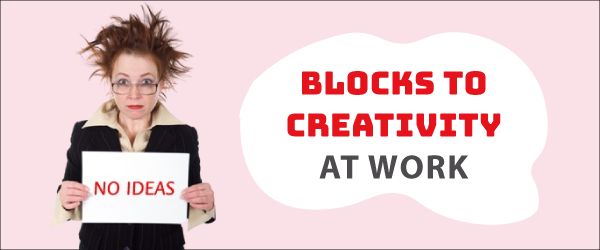
Designing learning experiences can be demanding, particularly if you’re devoted to creative strategies that engage your audience. At times, however, it feels as though the well is dry and your creative flow has disappeared. You may have blocks to creativity, of which there are many. If you can identify the type of block, you can overcome it.
Creativity Defined
Creativity manifests in many ways, making it difficult for psychologists to study, research, and define it. Think of how creativity informs technical innovation, artistic expression, scientific endeavors, individual life choices, problem-solving, and gameplay—such a variety of domains!
Although psychologists don’t agree on a definition, there is a general sense that creativity involves the production of a new and valuable idea, action, or object. The value of a creative endeavor depends on the circumstances or cultural context. Find out more about the stages of creativity .
You may generate creative solutions to life’s problems every day without even realizing it. But you can find yourself stuck when you need to produce creative work on demand.
Creative Obstacles
In the book Conceptual Blockbusting , author James Adams presents four categories of common obstacles that block creativity:
- Perceptual blocks
- Emotional blocks
- Cultural and environmental blocks
- Intellectual and expressive blocks.
Understanding these blocks is the first step to conquering them.
1. Perceptual Blocks
There are many forces that influence our perceptions, including expectations, bias, cultural values and past experience. This causes us to see the world through our own filters and our own stereotypes. When perceptual blocks deter us from perceiving a problem clearly, it hampers creative problem-solving. According to Adams, we often reject evidence that violates our preconceived ideas.
How can we solve a problem when we aren’t perceiving it accurately? For example, suppose an instructional designer harbors false ideas about audience members due to stereotyping. This may create a misperception of their work performance problems, which would interfere with creative problem-solving strategies.
This happened to me several years ago when I was told by the sponsor of a course for physicians that the audience members preferred lectures and did not like games. He said this was what they were used to in medical school and continuing education courses. However, as I got to know the audience members, I discovered that although they might not have time for games, they were willing to learn through simulations of real-life events and problem-solving. This approach was much more engaging.
2. Emotional Blocks
Many people are uncomfortable with taking risks and fear making mistakes. Much of our traditional educational system is based on coming up with one correct answer. When a person lacks confidence or fears rejection, it can hinder the free flow of creative juices.
We may also suffer from other emotional blocks, such as:
- A preference for making judgments too soon rather than a focus on generating many ideas first
- An intolerance for ambiguity
- An inability to take the time to allow ideas to incubate
According to Adams, these emotions can interfere with our ability to ideate, manipulate, and explore new ideas. This matches what brain research demonstrates: that signals from the senses go directly and quickly to the brain’s emotional centers even before one can analyze a situation rationally. As the emotional centers in the brain create an automatic response, it can choke creativity.
3. Cultural Blocks to Creativity
Conceptual Blockbusting points out that we are part of many cultures related to age, ethnicity, religion, values, and the broader culture. We absorb underlying beliefs from our cultural interactions that can interfere with creative innovation. For example, it’s common for adults to think that play and fantasy are for children, that logic is more important than feeling, and that doing nothing (while ideas incubate) is lazy. These are the types of messages that infiltrate our minds in a slow drip. These are the types of messages that can block creativity.
Psychologists say creativity thrives in a permissive environment, yet many people spend their days in a workplace that frowns upon innovative thinking. Furthermore, the traditional workplace is often filled with distractions interrupting your creative flow. In some workplaces, competition between employees, autocratic bosses, or a lack of team cooperation can bury creative notions. These are the environmental blocks we must overcome. For suggestions, see How Creative is Your Environment?
4. Intellectual and Expressive Blocks
Intellectual and expressive blocks may occur when approaching a problem from only one perspective. Sometimes, a problem is in one domain but must be solved in another. If you are inflexible in your thinking, this could block the generation of creative solutions.
For example, suppose your client insists on using video to demonstrate a process, but you can’t figure out how to stage the whole thing. Or there isn’t enough budget to pay for a video production. Maybe the solution is to use another type of media in another domain. Perhaps the process can be demonstrated with a series of sketches or photographs, and mocking up a prototype will convince your client otherwise. Cognitive flexibility lets you cross domain boundaries.
I believe every person is born with the potential to engage in a creative life. Various societal practices well as life circumstances can work against this potential. Creativity is not only important when designing training, but it enriches our lives and the lives of others. Creative acts help culture and society evolve. For more on improving your creativity, listen or download the transcript for this conversation with a professor of creativity: How to Develop Your Creativity .
Adams, James L. Conceptual Blockbusting , 2019, Basic Books, 5th Edition.

[…] Is Your Creativity Blocked? A quick little rundown on some common creativity stumbling […]
Leave a Reply
Your email address will not be published. Required fields are marked *
This site uses Akismet to reduce spam. Learn how your comment data is processed .

Perceptual Tricks to Help You Achieve Your Goals
Psychologist emily balcetis reveals the common pitfalls that stymie success..
Posted February 14, 2020
- What Is Motivation?
- Find a therapist near me

If your 2020 resolutions are long abandoned, you’re not alone. People are quick to set ambitious goals but often fail to follow through.
In her new book, Clearer, Closer, Better, New York University psychologist Emily Balcetis offers tips for harnessing the quirks of perception to make it easier to finish what you started.
PT spoke with her about some of the strategies outlined in the book.
What do we get wrong about setting goals?
We often set goals that are almost impossible to meet—people decide to go from 0 to 100. In thinking about running a marathon, which a lot of goals can be likened to, you can’t come out at a sprinter’s pace and expect to sustain that pace for 26 miles.
If we set goals that are too hard, we lose the reward that comes with having accomplished something. But if we set goals that are too easy, there’s no motivation to meet them. Find the sweet spot where it’s moderately challenging and inspiring, but not impossible to achieve.

What should we focus on to help sustain motivation?
In the middle of trying to achieve a goal, motivation can get murky and people don’t know what to do or what might work best for them. Should you look back on the progress that you’ve made or look forward at what you have left to do? Both are effective tactics, but you have to know when each works best.
Are you really committed to this cause or does it seem more perfunctory, a “have to do” rather than a “want to do"? If the goal is perfunctory and not core to your self-concept , looking back at past successes is more motivating. It signals that this is a goal you can finish. If the goal is core to who you are, looking forward at the work to come may be more motivating and inspiring.
A good example comes from research on charity donations. People who never donated to a particular charity before were assumed to be less committed, and people who had donated before were assumed to be more committed. When the goal was described as, “We’ve collected $5,000, half of what we’re hoping to get,” essentially looking back on past progress, it was motivating for people who had not yet donated but who were entertaining the possibility. When the goal was described as, “We only have $5,000 to go to get to our goal,” essentially looking forward at the work to come, it was more motivating for people who were committed to the cause.
What other strategies can help us keep on track?
It can be tricky to self-diagnose our progress and know whether we’re on track to achieve what we hope to. The brain is capable of distorting the truth in a way that might be helpful in the moment but unhelpful in the long run. For example, mistakes and failures may loom larger than successes—the negativity bias is really dominant.
Materializing can help. By materializing I mean making concrete what we’ve done, how much farther we have to go, and reviewing the data in full to accurately assess progress. I recommend literally writing your progress down or tracking it with an app, and then putting it in front of you.
You apply that concept to an interesting example in your book. How can materializing influence voter turnout?
A common tactic is to ask people: “Do you plan on voting?” or “Are you going to vote tomorrow?” A lot of people say yes. But asking that taps into an abstract conception of yourself. Yes, voting could be important to you. But the challenge is translating that abstract goal into concrete action.
When researchers ask specific questions like, “How are you going to get to the voting station?” “When in the day are you going to go?” “What will you be doing before and after?” it makes concrete or vivid the plan to accomplish the goal. It provides an action plan, which increases voter turnout.
How can we avoid temptations that might derail our progress?
We act on the things that we see, which we might not realize in the moment. First, realize that the world is set up in a way that might provide temptations that we want to avoid. Being aware of that can help to curb automatic impulses. But that awareness is also a tool to structure our environment in a way that will increase the odds that we make choices that are better aligned with our goals.

Research across lots of health fields has found what marketers knew all along—that when you put products by the cash register where everyone will see them, it increases the odds that someone decides to grab one of those products, like a box of cigarettes. This is why some countries have implemented legislation to remove cigarettes from the point of sale, especially if younger people might see them. Australia has removed cigarettes from point of sale displays, and smoking rates among teens dropped dramatically within the first months and years of making that change.
What is wide-bracket thinking and how does it help accomplish long-term goals?
Goals are not accomplished through one-off opportunities or single moments. Instead, they require commitment over time, especially health and wellness goals. Any single action isn’t going to make or break the goal. If you make a choice that isn’t in line with your goals, like eating an ice cream sundae, it can be easy to compartmentalize . You might say, “It isn’t a big deal,” “It’s my treat day,” or “I deserve a reward.” It’s easy to rationalize it and forget it. But then we run the risk of repeating that behavior.
By using a wide bracket, or a wide frame, we can spot patterns in our behavior and make better choices in the future. If you’re tracking eating patterns over time, you might notice when your temptation to snack is the strongest. If you’re tracking exercise patterns, you might notice when you have time to exercise or when you scheduled classes that you didn’t end up attending.
How have you used this approach in your own life?
As a case study, I tracked my unintended expenses. I used an app that pinged me every four hours and asked me if I spent any money I didn’t intend to. I answered honestly, and then I downloaded the data after two weeks. I thought that I wouldn’t be splurging very much, because my day is busy and I rarely leave the office, so I’d have no opportunity to spend money.
But after downloading the data, I realized I did. It was on snacks, mostly when I walked my son to school in the morning and picked him up in the afternoon. When I tallied it up, it wasn’t going to break the bank, but it was a substantial enough amount of money that I would have much preferred to spend it on babysitters to get extra time or on exercise classes, which I would have gotten more out of then a fig-pecan bar loaded with calories that made me feel bad about myself 20 minutes later. Taking a step back and looking at small, in-the-moment choices helped me realize something about myself that I wasn’t aware of.
You set a personal goal of learning to play the drums. Did you find any of these strategies particularly helpful?
I tried out all of these tricks, and the takeaway is that there isn’t one strategy effective at every point for every individual. What’s important is to add tools to your psychological toolbox so that you have the ability to be flexible as your goals change. That will provide options to overcome challenges that hinder your ability to be your best self.

Abigail Fagan is a Senior Associate Editor at Psychology Today .
- Find a Therapist
- Find a Treatment Center
- Find a Psychiatrist
- Find a Support Group
- Find Teletherapy
- United States
- Brooklyn, NY
- Chicago, IL
- Houston, TX
- Los Angeles, CA
- New York, NY
- Portland, OR
- San Diego, CA
- San Francisco, CA
- Seattle, WA
- Washington, DC
- Asperger's
- Bipolar Disorder
- Chronic Pain
- Eating Disorders
- Passive Aggression
- Personality
- Goal Setting
- Positive Psychology
- Stopping Smoking
- Low Sexual Desire
- Relationships
- Child Development
- Therapy Center NEW
- Diagnosis Dictionary
- Types of Therapy

Understanding what emotional intelligence looks like and the steps needed to improve it could light a path to a more emotionally adept world.
- Coronavirus Disease 2019
- Affective Forecasting
- Neuroscience
The missing piece in block design tasks: Resolving performance differences elicited by designs with identical stimulus parameters
- Published: 16 February 2022
- Volume 84 , pages 616–624, ( 2022 )
Cite this article
- Joseph C. Miller 1 ,
- Jeremy M. Raines 1 &
- Michael S. Jowkar 1
1630 Accesses
Explore all metrics
Block design stimulus variables (perceptual cohesiveness, response uncertainty, partial components) have been previously shown to impact test performance. However, relevant studies suggest designs that “look” different should elicit similar performance, where these stimulus parameters are identical. The current study sought to explore other, previously unidentified parameters. To control for known parameters, designs with no perceptual cohesiveness and maximum uncertainty were presented—rotated in increments of 90° and with block edges either cued or uncued—to 65 university undergraduates. Even with cohesiveness and uncertainty constant, performance differences between designs that “look” different were elicited. Post hoc, we hypothesized two possible contributory parameters and coded the designs accordingly. Regression analysis suggested redundancy of adjacent blocks (i.e., coherent regions within the design) appeared to reduce the actual uncertainty of some designs. On the other hand, local and global symmetry, as defined by Palmer ( 1991 , The Perception of Structure, pp. 23–39, The American Psychological Association), did not seem to predict block design performance above and beyond the effects of coherent regions. The advantages of a more complete understanding of stimulus contributions to test performance are discussed.
Similar content being viewed by others
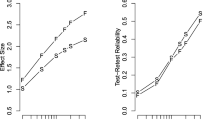
A psychometrics of individual differences in experimental tasks
Jeffrey N. Rouder & Julia M. Haaf
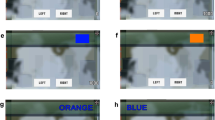
Calibration of cognitive tests to address the reliability paradox for decision-conflict tasks
Talira Kucina, Lindsay Wells, … Andrew Heathcote
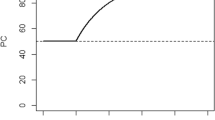
Same same but different: Subtle but consequential differences between two measures to linearly integrate speed and accuracy (LISAS vs. BIS)
Heinrich R. Liesefeld & Markus Janczyk
Avoid common mistakes on your manuscript.
Introduction
Block construction tasks, such as the original Kohs Block Design Test (Kohs, 1923 ) and numerous generations of the Block Design subtests of the Wechsler cognitive batteries for adults and children—Wechsler Adult Intelligence Scales (4th ed.; WAIS-IV; Wechsler, 2008 ) and Wechsler Intelligence Scales for Children (5th ed.; WISC-V; Wechsler, 2014 )—have long played a role in neuropsychological and psychoeducational assessment of visual-spatial abilities and visual-motor integration. The WAIS-IV and WISC-V Block Design subtests use 1-in. plastic cubes with two red sides, two white sides, and two sides that are diagonally divided half-red and half white (see Fig. 1 ). Four or nine blocks are arranged to produce a 2 × 2 or 3 × 3 design depicted in a stimulus book. Design construction is timed in the standardized administration, but time limits may be adjusted to explore the contribution of motor speed or other factors to test performance (Flanagan & Alfonso, 2017 ; Kaufman & Lichtenberger, 1999 ; Sattler, 2008 ; Sattler & Ryan, 2009 ). Psychometric properties of block design tasks make them appealing to clinicians and researchers alike—for example, WAIS-IV Block Design is highly reliable ( r xx = .87), loads highly on g ( r = .73), and retains ample or adequate specificity at all age ranges (Sattler, 2008 ).

Block Design task
Stimulus parameters that contribute to block design performance have been long and well documented. These include perceptual cohesiveness, set size uncertainty, and partial components (i.e., local gestalts). These are described below and illustrated in Fig. 2 .
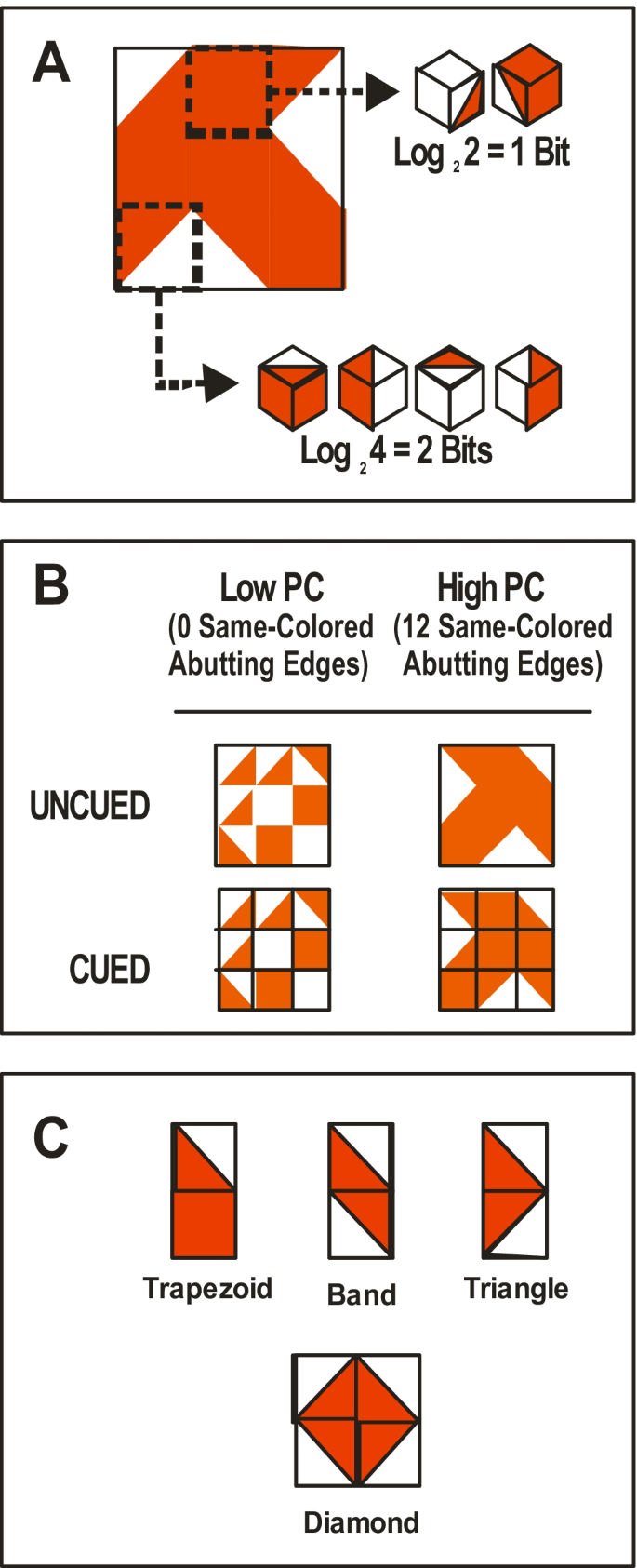
Known Block Design stimulus parameters: Response uncertainty ( a ), perceptual cohesiveness ( b ), and partial components ( c )
Uncertainty (U)
Informational uncertainty (U) has been defined as the sheer amount of information (number of “bits”) in a display, which is determined by the total number of its possible variants (Royer, 1977 ; Royer et al., 1984 ). Consider a 3 × 3 block design, as depicted in Fig. 2a , with four solid block elements (all red and all white) and five half-red elements. Choice of any solid block is constrained by the fact that only solid red and solid white faces are available; therefore, the number of binary choices, or “bits” of information, represented by this choice is log 2 (two possible choices) = 1 bit. Choice of a half-red block is constrained by the number of orientations possible with this type of block face—red in the upper left, upper right, lower left, or lower right. Thus, the information represented by this type of block element is equal to log 2 (four alternatives), or 2 bits of information. The number of bits may also be thought of as the number of sequential binary choices necessary to completely define the display in question. In Fig. 2a , the sum of the four 1-bit elements and the five 2-bit elements is 4(1) + 5(2) = 14 bits, meaning the entire design may be completely defined by 14 binary decisions. Uncertainty, then, may be thought of as the inverse of the probability of selecting the given display at random from among all of its possible (2 14 ) variants—the larger the uncertainty, the greater the amount of information that must be defined in order to reproduce the display.
Perceptual cohesiveness (PC)
The block design task has long been conceptualized as a measure of the solver’s capacity for visual analysis and synthesis (Kaufman, 1990 ; Sattler, 2008 ). To select the correct block face, the solver must first visually isolate one block element from the rest of the design, and then rotate the block and place it appropriately. If the edges of the target block elements are obscured by an abutting same-colored block (see Fig. 2b ), the work of segregating the target element is made more effortful—further, lacking the capacity for visual analysis renders the task nearly impossible. It has been long established that designs with more coherent edges (CEs, or the number of same-colored abutting edges in a design) tend to produce greater error rate and latency in producing a copy with blocks (Akshoomoff & Stiles, 1996 ; Royer, 1984 ; Royer et al., 1984 ; Royer & Weitzel, 1977 ). Further evidence is provided by the effects of “cueing” cohesive edges. When a design with high “perceptual cohesiveness” (PC—i.e., with numerous CEs) is overlaid with a grid corresponding to the edges of constituent block elements, effects of PC attenuate (Akshoomoff & Stiles, 1996 ). This effect manifests as an interaction between PC and cueing in studies that manipulate both variables (e.g., Miller & Skillman, 2008 ).
Partial components
Rozencwajg ( 1991 ) and Rozencwajg and Corroyer ( 2001 ) have explored the effects of multiblock subcomponents of block design stimuli (e.g., two-block “trapezoids” or four-block “diamonds”; see Fig. 2c ), on test performance. These researchers demonstrate the presence of these visually salient subcomponents (e.g., stripes, squares, diamonds, chevrons) may guide the construction strategies of the most adept solvers, who tend to construct these smaller design elements first, and then integrate them into the larger construction.
Partial components excluded, little research on block design has focused on differences in “appearance” as stimulus-based determinants of performance. Both U and PC are operationalized independently of design appearance (i.e., designs which “look” very different may be identical with respect to U and PC). Partial components are defined by same-colored regions, meaning PC correlates with the presence/absence of partial components. As currently defined, partial components are absent where PC is nil. However, it is possible to identify “shapes” within block design stimuli that involve no coherent edges. For example, Design M (see Fig. 3 ), with no coherent edges (PC = 0), includes two shapes (upper left and lower right) that might be described as “pinwheels.” These distinctive shapes seem to “pop-out” based on their symmetry rather than the contours suggested by coherent regions of red or white.
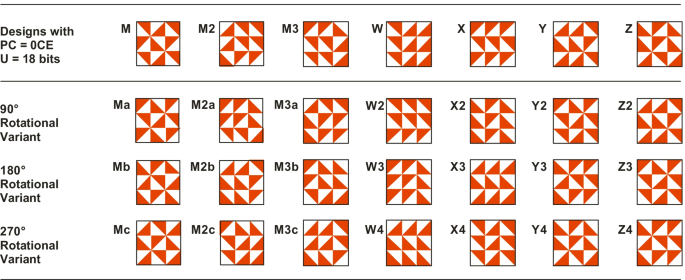
Designs with no perceptual cohesiveness (PC = 0) and high uncertainty (U = 18 bits). PC is defined as the number of same-colored abutting edges, or coherent edges (CE). Uncertainty is the sum of the log 2 of the number of possible placement choices for each of the blocks in the design. Multiple designs were generated by rotating the seven prototypes
An unexplored subset of block designs, those with no coherent edges (PC = 0) and only half-red block elements (maximum U), may provide the means for identifying other parameters impacting performance. By holding PC and U constant, we would expect all mean performance differences between designs to disappear if the current set of parameters is adequate to fully explain stimulus demands of the task. However, if different designs with identical U and PC elicit different test performance, it would be reasonable to conclude that parameters other than PC and U influence task difficulty. Further, with PC minimized, cueing should have little impact on performance, unless cueing serves a role beyond that of assisting the visual analysis process (i.e., counteracting effects of PC). Therefore, if edge cueing elicits different performance where there are no coherent edges, it would be reasonable to conclude that cueing does something beyond the disambiguation of block edges.
To determine whether U, PC, and partial components comprehensively explain block design performance, we developed a set of 3 × 3 block designs that were identical with respect to U and PC, and precluded partial components (see Fig. 3 ). Seven nine-block designs were developed with high uncertainty (18 bits), low perceptual cohesiveness (no coherent edges), and, therefore, no partial components as defined by Rozencwajg ( 1991 ). Using all possible rotational variants of these initial seven designs, 28 designs were generated (see Fig. 3 ). To assess the impact of edge cueing, a duplicate set of these 28 designs were developed with a grid overlay, for a total of 56 designs. All designs were printed 3 × 3 in black and red on laminated cards, and presented in a binder. Blocks were 1-in. red and white plastic cubes, identical to those used in the Wechsler tests.
Participants
As part of a larger study of block-design performance, either cued or uncued designs were administered to 65 undergraduates at a large Midwestern university. Assignment to cued or uncured condition was random. Participants were screened for history of cognitive impairment, history of neurological insult, and visual-motor impairments. Gender was balanced across groups.
The number of participants was considered more than adequate for detecting main effects of the repeated measures factors of the analysis of variance (ANOVA) described below (i.e., seven different designs, four different rotations). G*Power 3 ( https://download.cnet.com/G-Power/3000-2054_4-10647044.html ) indicated that for an a priori effect of eta 2 = .10 (Cohen’s f ~.33), 20 participants would be sufficient for, or exceed, power = .80 with a Type I error rate of .01, for both the seven-level and four-level repeated-measures factors.
Participants completed either cued ( N = 31) or uncued ( N = 34) designs in random order, and were assigned to the cued or uncued condition randomly. Participants were tested individually by either the lead author or an undergraduate researcher trained by the lead author. Participants were introduced to the blocks and the printed design models, and instructed regarding construction. Each participant constructed one sample 3 × 3 block design, to verify comprehension of the instructions. Participants were told to work as quickly and accurately as possible and to alert the examiner when they had completed a design. Latency for a correct assembly was recorded (i.e., the participant was asked to keep working if their finished construction was incorrect). Timing began as soon as the examiner turned the page to a new design, and stopped immediately once the participant declared they had finished, and the design was correctly constructed. These data were log-transformed to correct for significant skew (Tabachnick & Fidell, 2007 ).
A mixed-design 2 × 7 × 4 ANOVA was performed with between-subjects factor of cueing condition (cued vs. uncued) and within-subjects factors of design (seven different designs displayed in columns of Fig. 3 ) and rotation (four rotational variants per design; rows of Fig. 3 ). The log-transformed latency scores served as DV. Results appear in Table 1 .
Main effects of cueing condition were nonsignificant, consistent with the absence of same-colored abutting edges in the designs. Main effects of design type, however, were significant, F (6, 378) = 12.252, p < .001, while main effects of rotation were not, F (3, 162) = 0.682, p = .564. Though main effects of rotation were not significant, a significant Design × Rotation interaction was observed, F (18, 1134) = 1.777, p = .023. No other main effects or interactions were significant.
Post hoc Tukey HSD tests were performed, all with α = .01. Tests comparing design means (seven means, N = 65) revealed the main effect of design is due to the significant ( p < .01) difference between the means for designs W and M. For the Design × Rotation interaction, Tukey tests (four means, N = 65) indicate the interaction between design and rotation is due solely to the variation among the rotation means for design X (see Fig. 4 )—that is, unlike the other six designs, design X elicits significant ( p < .01) performance differences when rotated. Best performance occurs at 0° and 180° for this design.
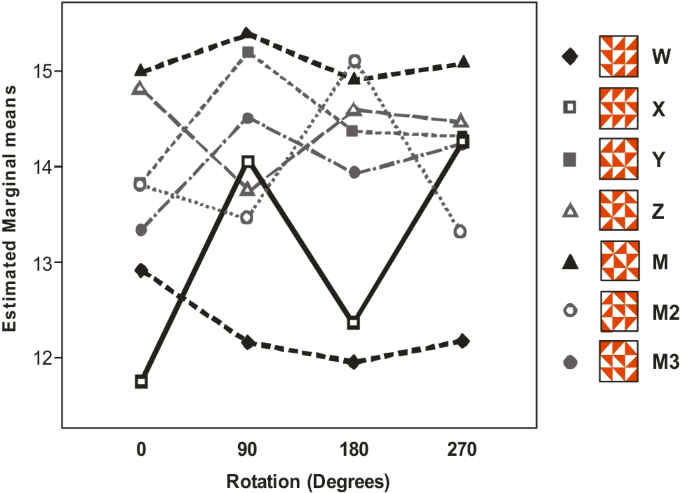
Estimated marginal means from the model. Each line represents one of the seven designs. Markers, from left to right, represent mean performance at 0, 90, 180, and 270 degrees of rotation. Differences between rotational means are only significant ( p < .01) for Design X. and mean latencies are only significantly ( p < .01) different when Designs W and M are compared
Post hoc analyses
The prior analysis indicated that, despite the matching of the seven designs (and their rotational variants) for PC and U, performance differences were elicited on the basis of the designs’ appearance. We therefore hypothesized possible additional stimulus parameters which might account for the observed effects.
Inspection of the seven designs suggested two possible sources of performance difference: (a) the presence of local and global symmetries within some of the designs and (b) coherent regions that may have served to reduce overall uncertainty by introducing informational redundancy.
Local and global symmetry
Garner and Clement ( 1963 ) defined symmetry in visual dot-matrix patterns by quantifying their rotation and reflection set sizes—that is, the number of unique patterns that could be produced by a set of geometric transformations (e.g., rotation or reflection) of a pattern. This was refined by Palmer ( 1991 ), who identified symmetry subtypes (e.g., right diagonal axial symmetry, 90-degree rotational symmetry) by the type and number of geometric transformations that leaves the original pattern unchanged. Palmer demonstrated these various symmetry subtypes, when measured at the local or global level, corresponded to rater’s mean assessment of the pattern’s “figural goodness,” defined as the extent to which the observed pattern is “regular, orderly, and simple.” Figural goodness is of interest, because “good” figures are more easily matched, learned, remembered, and verbally described (Palmer, 1999 ).
While Royer ( 1977 ) explored the effects of symmetry in his block designs, there are two limitations to his approach. First, designs were constructed based on Garner and Clement’s ( 1963 ) dot stimuli, and therefore varied by their reflection and rotation subset size. This resulted in only variation in global symmetries with local regions of symmetry ignored. Further, groups of different rotation and reflection subset sizes also varied with respect to their mean perceptual cohesiveness, which may have accounted for the significant linear effects found. The designs used in the current study account for both local and global symmetries, and control for the potential effects of PC.
Palmer’s ( 1991 ) model for the additive contribution of various symmetry types at the local or global level to judgments of figural goodness is defined by:
where S is the individual’s subjective rating of figural goodness, w is the relative importance (weight) of a particular symmetry subtype, and r is the radius of the field of symmetry. When applied to a 3 × 3 block design (see Fig. 5 ), r is constrained by the circular radii possible with 2 × 2 or 3 × 3 block combinations (i.e., only square groupings of blocks accommodate a circular area, πr 2 , and only two sizes of square groupings of blocks are possible). As a result, there are only five possible locations for the symmetry subtypes described by Palmer: upper left ( r 1 ) upper right ( r 2 ), lower left ( r 3 ) and lower right ( r 4 ), and the entire display ( r g ). Because radius r g is 1.5× longer than the other four radii, Equation 1 predicts that symmetries defined within this radius will be proportionately more influential.
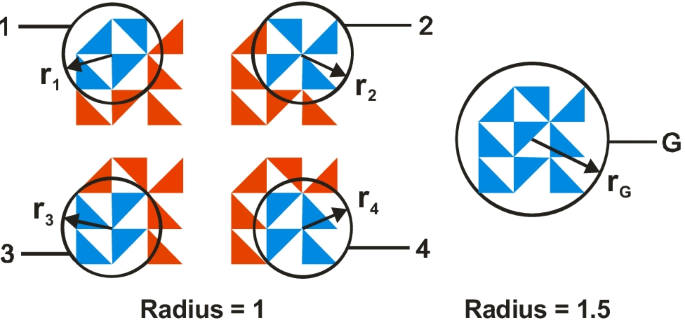
Loci of potential symmetry in 3 × 3 block designs
Palmer ( 1991 ) has also estimated the relative weights ( w in Equation 1 ) of specific symmetry subtypes. It is therefore possible to identify local and global symmetries within each of the seven block designs (see Fig. 6 ) and code each location by the weight of symmetry at each location; the sum should provide a rough estimate of the subjective impact of symmetry in block designs.
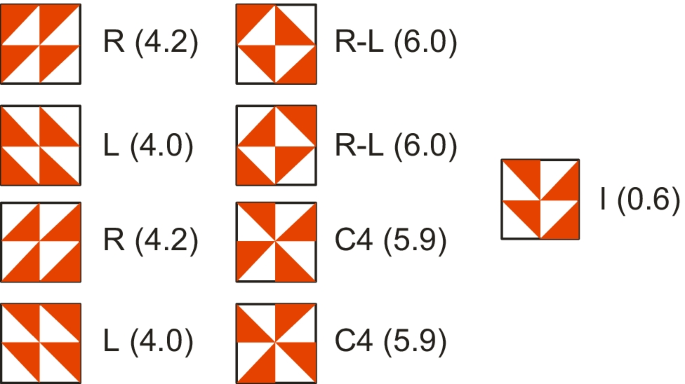
Examples of local symmetry subtypes appearing in designs and their mean figural goodness ratings (in parentheses) found by Palmer ( 1991 ) and adapted to the current block designs. R = right-diagonal axial symmetry; L = left diagonal axial symmetry; R-L = right and left diagonal axial symmetry; C4 = 90-degree, 180-degree, and 270-degree rotational symmetry; I = identity (no symmetry). Global symmetries were either I, R, or L
Coherent regions and uncertainty
Some block designs are trivially simple to construct. Take for example a 3 × 3 design with no PC (CE = 0) and high uncertainty (U = 18), but with all of the half-red constituent blocks identically oriented (e.g., the red triangle is in the upper right for all nine elements of the design). Based on the previous definition of U—that is, summation of the uncertainty for each block type—this design should have a high uncertainty. However, the solution is trivial because once the orientation of one element has been identified; the orientation of the other elements is redundant . In effect, this design has U = 2, rather than U = 18, because the identity of all the blocks may be determined by choosing the orientation of one block.
While none of the designs depicted in Fig. 3 fit this description, many of them incorporate regions in which block elements are identical. For example, design M2 has four identical elements at upper right. We might consider this coherent region of 2-bit elements as representing 2 bits overall, since knowing the identity of one of the four blocks renders the identity of the other three redundant, thereby reducing the overall uncertainty of the design. By defining coherent regions as two or more adjacent and identical blocks , three regions may be found for Design M2—the four-block region already identified, and two 2-block regions at lower right and upper left. Summing the reduced uncertainties, based on these coherent regions, yields a “Least-U” score of 2 (four blocks in the upper right) + 2 (two blocks at lower right) + 2 (two blocks at upper left) + 2 (the lone block in the lower left corner) = 8 bits (cf. the uncertainty as defined by Royer, 1977 , is 18 bits). The Least-U estimate reflects the relative simplicity of this design, given the informational redundancy of many of its parts.
Exploratory analysis of coherent region and local/global symmetry effects
Each of the seven designs and their rotational variants was recoded for (a) uncertainty corrected for coherent regions (“Least-U”), and (b) local/global symmetry as defined by Palmer. For symmetry scores, mean ratings of figural goodness (Palmer, 1991 ; see Fig. 6 ) were assigned to each of five locations within a design ( r g , r 1 , r 2 , r 3 , r 4 ), and summed. For symmetries at the r g location, the assigned score was multiplied by 1.5, reflecting the larger radius at the global level. The coded scores for Least-U and local-global symmetry are displayed in Table 2 .
A hierarchical regression analysis was performed to explore the unique contribution of local and global symmetries to block design performance, relative to the unique contributions of coherent regions and cueing effects. Mean latency scores for each design served as DV in the regression, while the total symmetry score and least uncertainty (Least-U), based on coherent regions served as IVs, along with the cueing condition of the design. Cueing condition was added in Step 1, with cueing and Least-U entered together in Step 2. To determine the effects of symmetry above and beyond that of cueing and Least-U, symmetry was entered last. Controlling for effects of Least-U was necessary given the observed correlation between symmetry and Least-U ( r = .82). Cueing effects were included in the analysis because of the observed differences in mean block design performance elicited by cued and uncued designs, t (54) = 2.38, p = .022.
As indicated in Table 3 , the model including both Least-U and cueing condition yielded good prediction of mean performance scores ( R 2 = .449). However, the addition of symmetry scores to the model yielded no improvement in prediction. Further, symmetry was the only predictor yielding nonsignificant β weights, while all other predictors were significant ( p < .05) in all models. These data suggest that while coherent regions contributed to performance differences, symmetry, based on previous estimates of figural goodness, did not add any predictive power distinct from the contribution of Least-U. Figure 7 displays best-fit lines for cued and uncued designs when Least-U is the only parameter in the model. Because cueing was a significant predictor in the regression analysis, separate fit lines are displayed for cued and uncued conditions (28 cases each).
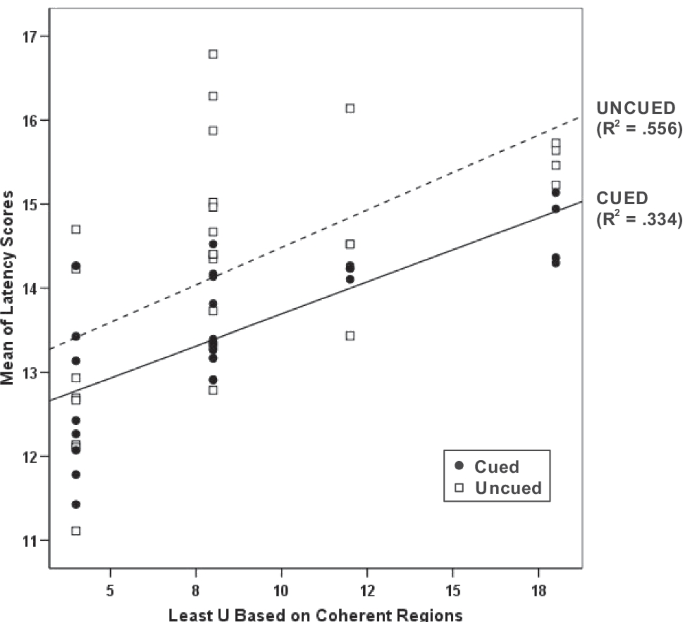
Two slopes—one for edges cued (solid line) and one for edges uncued (dotted line) designs—with Least-U, based on coherent regions, as IV and mean latency scores for 28 designs as DV. In the cued designs, lines were superimposed to indicate where block edges should be in the assembled design
In the current study, we sought evidence of unidentified stimulus-based performance differences in block design testing. Performance differences were observed even holding perceptual cohesiveness and uncertainty constant (main effects of design). Moreover, these performance differences cannot be explained by the presence of partial components, since perceptual cohesiveness was nil, and no partial components, as defined by Rozencwajg ( 1991 ) were possible.
Coherent regions
Post hoc analyses revealed that main effects of design type were due to the significant differences between Designs W and M. Referencing Table 2 , Design W has the smallest Least-U score of all seven designs (4), while M has the highest (18)—that is, when coherent regions are accounted for, Design M contains the most nonredundant information, while W contains the least. Similarly, the symmetry score for Design M is the highest among all designs (30.1), while the symmetry score for W (10.1) is the lowest, except for Design X (3.3).
The regression analysis indicated that symmetry score does not aid in prediction of performance above and beyond Least-U based on coherent regions. These analyses suggest the apparent performance differences are due to the presence of larger coherent regions in the “easiest” designs (e.g., W, X). The interaction between Design and Rotation, resulting from the effects of rotation on latency for Design X, also support this conclusion. Design X’s coherent regions are defined by three horizontal bands when rotated 0° and 180°. However, when rotated 90 and 270 degrees, these coherent bands are vertical (see Fig. 3 ). Prior research on solution styles and partial components (Rozencwajg, 1991 ) indicates that when partial components are absent, most solvers default to a left-to-right block placement sequence, an observation confirmed in the current study. In other words, solvers tend to place blocks in the same sequence in which they would read words on a page, starting at the left of the top row and finishing at the right side of the lowest row. It is possible that when the coherent regions of Design X were oriented parallel to the left–right placement sequence (i.e., in the 0° and 180° positions), solvers using the left–right strategy would readily benefit from the redundancy within the bands. However, when the coherent bands were vertically oriented (in the 90° and 270° positions), the left–right strategy would be at odds with the coherent bands’ orientation. The significantly better performance on Design X at the 0-degree and 180-degree positions is consistent with this explanation, though further experimentation would be needed for confirmation.
While symmetry, defined by previous ratings of the figural goodness of various symmetry types, did not seem to relate to performance differences in the designs with no cohesiveness and maximum uncertainty, symmetry scores were derived from prior research using a different task. Further experiments, in which local and global symmetry are systematically varied may more conclusively address the possible contribution of symmetry at the local and global level, if any.
Implications for the block design task
A complete understanding of the stimulus parameters underlying block design difficulty has several advantages. Test developers can more accurately posit the proper sequencing of block design items in multi-item presentations. Where block designs appear in published cognitive tests, they are, to optimize efficient administration, typically ordered by their difficulty. Should, for example, 90-degree rotated versions of a design with obvious coherent regions yield different item difficulty, this should be accounted for when developing test items. On the other hand, if local and global symmetry does not, in fact, contribute to item difficulty, this gives test developers more flexibility in designing items that “look” different, but produce identical difficulty.
The advantage of developing nonidentical block designs with identical difficulty is most apparent in the test–retest context. Often, neurocognitive tests are administered repeatedly to evaluate changes in abilities owing to development, degenerative disease, and so forth. Error due to practice effects could be minimized if the researcher, practitioner, and test developer were able to rapidly develop “novel” designs with identical effects on task performance (Miller et al., 2009 ), or more cheaply validate sets of nonidentical items, whose psychometric equivalence has been previously established on the basis of known parameters.
Given that the analysis of symmetry and coherent regions were post hoc, the effects of coherent regions, as defined in this study, should be experimentally verified. Other possible parameters should be rigorously pursued as well. The primary finding that designs with identical informational content (uncertainty) and identical numbers of coherent edges (perceptual cohesiveness) can produce measurably different task performance, even where no partial components are present, suggests that we do not yet fully understand what the block design stimulus contributes to item difficulty.
Akshoomoff, N., & Stiles, J. (1996). The influence of pattern type on children’s block design performance. Journal of the International Neuropsychological Society, 2 (5), 392–402. https://doi.org/10.1017/S1355617700001466
Article PubMed Google Scholar
Flanagan, D., & Alfonso, V. (2017). Essentials of WISC-V assessment . John Wiley & Sons.
Google Scholar
Garner, W. R., & Clement, D. E. (1963). Goodness of pattern and pattern uncertainty. Journal of Verbal Learning and Verbal Behavior, 2 (5/6), 446–452. https://doi.org/10.1016/S0022-5371(63)80046-8
Article Google Scholar
Kaufman, A. (1990). Assessing adolescent and adult intelligence . Allyn & Bacon.
Kaufman, A., & Lichtenberger, E. (1999). Essentials of WAIS-III assessment . John Wiley & Sons.
Kohs, S. C. (1923). Intelligence measurement: A psychological & statistical study based upon the block-design test. MacMillan. https://doi.org/10.1037/11201-000
Book Google Scholar
Miller, J. C., & Skillman, G.D. (2008). Relationship of stimulus and examine variables to performance on analogous visual and tactile block design tasks. Applied Neuropsychology , 15 (2), 140–150. https://doi.org/10.1080/09084280802160901
Miller, J. C., Ruthig, J. C., Bradley, A. R., Wise, R. A., Pedersen, H. A., & Ellison, J. M. (2009). Learning effects in the block design task: A stimulus parameter-based approach. Psychological Assessment, 21 (4), 570–577. https://doi.org/10.1037/a0016762
Palmer, S. (1991). Goodness, gestalt, groups, and Garner: Local symmetry subgroups as a theory of figural goodness. In G. R. Lockhead & J. R. Pomerantz (Eds.), The perception of structure (pp. 23–39). The American Psychological Association. https://doi.org/10.1037/10101-001
Chapter Google Scholar
Palmer, S. (1999). Vision science: From photons to phenomenology . The MIT Press.
Royer, F. (1977). Information processing in the Block Design Task. Intelligence, 1 (1) , 32–50. https://doi.org/10.1007/BF03039311
Royer, F. (1984). Stimulus variables on the block design task: A commentary on Schorr, Bower, and Kiernan. Journal of Consulting and Clinical Psychology, 52 (4), 700–704. https://doi.org/10.1037/0022-006X.52.4.700
Royer, F., & Weitzel, K. (1977). Effects of perceptual cohesiveness on pattern recoding on the block design task. Perception & Psychophysics, 21, 39–46. https://doi.org/10.3758/BF03199465
Royer, F. L., Gilmore, G. C., & Gruhn, J. J. (1984). Stimulus parameters that produce age differences in block design performance. Journal of Clinical Psychology, 40 (6), 1474–1485. https://doi.org/10.1002/1097-4679(198411)40:6<1474::AID-JCLP2270400636>3.0.CO;2-7
Rozencwajg, P. (1991). Analysis of problem solving strategies on the Kohs Block Design Test. European Journal of Psychology of Education, 6 (1), 73–88. https://doi.org/10.1007/BF03173149
Rozencwajg, P., & Corroyer, D. (2001). Strategy development in a block design task. Intelligence, 30 , 1–25.
Sattler, J. M. (2008). Assessment of children: Cognitive foundations (5th ed.). Jerome M. Sattler.
Sattler, J. M., & Ryan, J. J. (2009). Assessment with the WAIS-IV. Jerome M. Sattler.
Tabachnick, B., & Fidell, L. (2007). Using multivariate statistics (5th ed.). Pearson Education Inc.
Wechsler, D. (2008). Wechsler adult intelligence scale (4th ed.; WAIS-IV). Pearson.
Wechsler, D. (2014). Wechsler intelligence scale for children (5th ed.; WISC-V). Pearson.
Download references
Author information
Authors and affiliations.
Department of Psychology, University of North Dakota, Box 8380, Grand Forks, ND, 58202, USA
Joseph C. Miller, Jeremy M. Raines & Michael S. Jowkar
You can also search for this author in PubMed Google Scholar
Corresponding author
Correspondence to Joseph C. Miller .
Ethics declarations
Open practices statement.
The data and materials for all experiments are available by request from the lead author ([email protected]). None of the experiments described was preregistered.
Ethics approval
Approval was obtained from the ethics committee of the University of North Dakota. The procedures used in this study adhere to the tenets of the Declaration of Helsinki. Informed consent was obtained from all participants.
Consent to participate
Informed consent was obtained from all individual participants included in the study.
Conflicts of interests/Competing interests
The authors did not receive support from any organization for the submitted work. The authors have no relevant financial or nonfinancial interests to disclose.
Additional information
Publisher’s note.
Springer Nature remains neutral with regard to jurisdictional claims in published maps and institutional affiliations.
Rights and permissions
Reprints and permissions
About this article
Miller, J.C., Raines, J.M. & Jowkar, M.S. The missing piece in block design tasks: Resolving performance differences elicited by designs with identical stimulus parameters. Atten Percept Psychophys 84 , 616–624 (2022). https://doi.org/10.3758/s13414-021-02396-w
Download citation
Accepted : 13 October 2021
Published : 16 February 2022
Issue Date : February 2022
DOI : https://doi.org/10.3758/s13414-021-02396-w
Share this article
Anyone you share the following link with will be able to read this content:
Sorry, a shareable link is not currently available for this article.
Provided by the Springer Nature SharedIt content-sharing initiative
- Block design test
- Local symmetry
- Global symmetry
- Uncertainty
- Perceptual cohesiveness
- Find a journal
- Publish with us
- Track your research
Perceptual contributions to problem solving: Chunk decomposition of Chinese characters
Affiliation.
- 1 Key Laboratory of Mental Health, Institute of Psychology, Chinese Academy of Sciences, Da-tun Road 10#, Chao-Yang District, Beijing 100101, PR China. [email protected]
- PMID: 17027779
- DOI: 10.1016/j.brainresbull.2006.07.005
Chunk decomposition is the decomposing of familiar patterns into their component elements so that they can be regrouped in another meaningful manner. Such a regrouping is sometimes critically required in problem solving because during initial encoding the problem elements become automatically grouped into familiar chunks and this may prohibit finding a novel or efficient solution to problems [G. Knoblich, S. Ohlsson, H. Haider, D. Rhenius, Constraint relaxation and chunk decomposition in insight problem solving, J. Exp. Psychol. Learn. Mem. Cogn. 25 (1999) 1534-1556]. In order to elucidate the brain mechanisms underlying the process of chunk decomposition, we developed a task that uses Chinese character as materials. Chinese characters are ideal examples of perceptual chunks. They are composed of radicals, which in turn, are composed of strokes. Because radicals are meaningful chunks themselves but strokes are not meaningful in isolation, it is much easier to separate a character by its radicals than to separate a character by its strokes. By comparing the stroke-level decomposition and the radical-level decomposition, we observed activities in occipital, frontal, and parietal lobes. Most importantly, during the moment of chunk decomposition, we found the early visual cortex showed a tendency of negative activation whereas the higher visual cortex showed a tendency of positive activation. This suggests that in order to successfully decompose a chunk, the higher visual areas must at least partly be 'disconnected' from the input provided by early visual processing in order to allow simple features to be rearranged into a different perceptual chunk. We conclude that early perceptual processes can crucially affect thinking and problem solving.
Publication types
- Comparative Study
- Research Support, Non-U.S. Gov't
- Asian People
- Attention / physiology
- Brain Mapping
- Image Processing, Computer-Assisted / methods
- Magnetic Resonance Imaging / methods
- Oxygen / blood
- Pattern Recognition, Visual / physiology*
- Photic Stimulation / methods
- Prefrontal Cortex / blood supply
- Prefrontal Cortex / physiology
- Problem Solving / physiology*
- Transfer, Psychology / physiology*
- Visual Cortex / blood supply
- Visual Cortex / physiology

In-Person or Online

OVERCOMING THE BLOCKS TO PROBLEM SOLVING
By its education asia.
[Problem Solving Guide-Home]
Perceptual blocks
These are relatively easy to overcome, simply by using the step-by-step approach, e.g.:
- having systems to warn of the occurrence of problems
- defining and analysing problems adequately
- collecting all the relevant information
- questioning whether you have used inaccurate information or made assumptions about what is and isn't relevant
- asking for other people's points of view
- using models to. represent the relationships between different aspects of the problem.
Emotional blocks
These can be difficult to overcome because they require a change in attitude, which may take some time to learn. The following methods help to achieve this change:
- accept that if you are looking for new, better ways of doing something, some mistakes are almost inevitable
- remember that many great thinkers have been , ridiculed for what turned out to be great inventions eg the heavier-than-air flying machine
- if you still' fear looking foolish, try to develop your ideas into a practical form before you show them to anyone, or develop a logical argument to prove that they will work
- following a strictly methodical approach will automatically curb impatience
- to avoid anxiety tackle problems in small, easily manageable steps; if necessary, put the problem aside and come back to it later
- if you don't want to take risks, identify the worst possible consequences, and how likely they are to occur, and then try to find ways of preventing them
Intellectual blocks
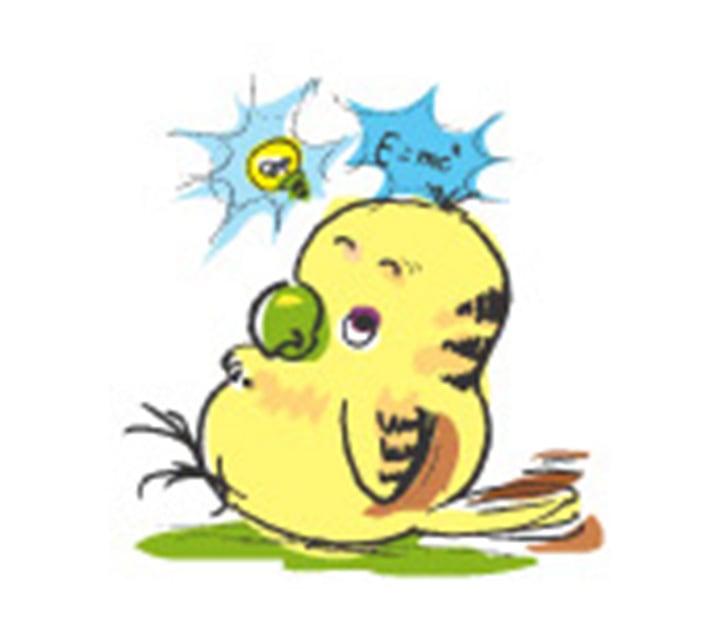
To overcome the intellectual blocks described in this chapter you need to:
- learn to be methodical
- practice using different types of 'language' to tackle problems
- practice using the various analytical and creative techniques.
Expressive blocks
Overcoming these blocks involves learning to
- identify which 'language' is most likely to help you solve a particular problem
- use languages in different ways, eg diagrams to represent problems normally described verbally
- ensure that when you explain ideas you have all the relevant information, it is accurate, and that you convey it all clearly
- develop a style of working with others which is not too forceful (so that people are more willing to listen to you) and not too passive (so that you learn how to influence people); showing enthusiasm for your ideas can help by infecting others with enthusiasm.
Environmental blocks
Overcoming these blocks can be done by using some of these methods:
- if there is a climate of ,criticism, develop the strengths of your ideas and ways to overcome their weaknesses before you propose the being careful how you describe it to others " also help to avoid premature criticism
- conduct your problem solving in an environment which suits you, ie comfortable and free of distractions likely to hinder you; this may make setting aside some time when you can move away from your normal working environment
- if you feel people may not provide the help need, try to identify the benefits to then solving the problem before you ask for their help
- if pressure of work hinders you, set aside s time when you are free from other wor tackle the problem
- if your work is monotonous, introduce ~ variety by looking for different ways of , the job; alternatively, look for varied tasks that could be delegated to you. '
Cultural blocks
The following methods can be used to help overcome various cultural blocks:
- critically question existing ideas and me looking for areas for improvement
- identify constraints and question their validity
- if you dislike change, do some 'wishful thinking’ to see what benefits change would bring; ask yourself what would be the consequences of taking a new approach.
- if you think fantasy and humour have no place in problem solving, practice using your day dreams to develop your ideas; next time someone cracks a joke about a situation, think about what new perspectives it creates
- if you think intuition is unreliable, think back over recent problems you have solved; did that first 'hunch' turn out to be dose to your final solution?
- if you are in a very competitive environment, be careful how you explain your ideas to people competing with you; emphasise the likely benefits to them
- if there is a strong climate of cooperation, ask members of your group for their ideas and comments; share the problem with them.
If you fail to solve a problem effectively, look back over your thoughts and actions to see if a block hindered you. If it did, next time you can prepare to avoid it. By being constantly aware of the blocks that can occur and using the techniques described above to overcome them when they hinder your problem solving, you will find that gradually fewer and fewer blocks occur.
- There is a range of factors known as blocks which can prevent you finding the most effective solutions to our problems.
- You can recognise blocks by their specific effects on your thinking and problem solving.
- When you recognise that a block exists you can overcome it by using the appropriate technique.
Read the next article A good climate for problem solving
- What are problems?
- The stages of problem solving
- The skills of problem solving
- Why people fail to solve problems effectively
- Barriers to finding the best solution
- Overcoming the blocks to problem solving
- A good climate for problem solving
- Company policies and procedures effect on problem solving
- Style of management effect on problem solving
- Physical environment effect on problem solving
- Does your organisation support problem solving? 15 telling questions to ask!
- So what's the problem?
- Defining problems – closed and open ended problems
- Finding possible solutions to your problems
- The Road to a Solution - Using models to represent a problem
- The Road to a Solution - Generating ideas
- Solving problems using a group - advantages and disadvantages
- The ‘unlucky’ list to bad decision making
- Evaluating the solution
- Accepted - Reasons for opposition and how to plan your presentation
- Accepted - Making your presentation
- Implementing your solution
- The Action Plan

Genius is one percent inspiration and ninety-nine percent perspiration.
Fill in the form below or you can also visit our contact us page .

Discuss the Emotional, Intellectural, Expressive and Environmental Blocks in Problem Solving.
Emotional block..
Emotional inhibitions to creativity usually result from past traumatic experiences and/or the stress of everyday living. Probably the root of most emotional blocks is insecurity. Regardless of whether it is an insecurity of self, life, parents, job, death, unknown, or new situations, it can still be regarded as a fear or anxiety’ that is just as effective in inhibiting creativity as are perceptual and cultural inhibitions.
Intellectural blocks.
This block can occur as a result of inflexible or inadequate uses of problem solving strategies. Lacking the necessary intellectual skills to solve a problem can certainly be a block as can lack of the information necessary to solve the problem. For example, attempting to solve complicated satellite communication problems without sufficient background in that area would soon result in blocked progress. Additional background, training, or resources may be necessary to solve a problem. Don’t be afraid to ask for help.
Expressive Block.
The inability to communicate your ideas to others, in either verbal or written form, can also block your progress. Anyone who has played a game of charades can relate to the difficulties that this type of clock can cause. Make sketches, drawings, and don’t be afraid to take time to explain your problem to others. They include:
- Using the wrong language.
- Inadequate explanations.
Environmental Blocks.
Distractions (phones, easy intrusions) are blocks that inhibit deep prolonged concentration. Working in an atmosphere that is pleasant and supportive most often increases the productivity of the problem solver. On the other hand, working under conditions where there is a lack of emotional , physical, economical, or organizational support to bring ideas into action usually has a negative effect on the problem solver and decreases the level of productivity. They include:
- Management style.
- Distractions.
- Physical discomfort.
- Lack of support.
- Lack of communication.
- Monotonous work.
- Expectations of others.
Tags: Ma Psychology

What is the Reciprocity of Liking Rule of Interpersonal Attraction?

Discuss the various types of Interpersonal Attraction.

Evaluate theories of Prosocial Behavior.

What is Informational Social Influence and Normative Social Influence?

Owlgen.in is a participant in the Amazon Services LLC Associates Program, an affiliate advertising program designed to provide a means for sites to earn advertising fees by advertising and linking to Amazon.in. Amazon, the Amazon logo, AmazonSupply, and the AmazonSupply logo are trademarks of Amazon.in, Inc. or its affiliates.
- Entertainment
- Health & Fitness
- Personal Growth
- Privacy Policy
Email : [email protected]

Compare items
- Total ( 0 )

IMAGES
VIDEO
COMMENTS
Common obstacles to solving problems. The example also illustrates two common problems that sometimes happen during problem solving. One of these is functional fixedness: a tendency to regard the functions of objects and ideas as fixed (German & Barrett, 2005).Over time, we get so used to one particular purpose for an object that we overlook other uses.
Perceptual Blocks to Problem Solving : Perceptual blocks exist when we are unable to recognize a problem or the information needed to solve it effectively. They include: a) Seeing only what you expect to see - Confuses the true nature of a problem, either because we exclude relevant information or include information just because we assume it ...
Piaget divided children's cognitive development into four stages; each of the stages represents a new way of thinking and understanding the world. He called them (1) sensorimotor intelligence, (2) preoperational thinking, (3) concrete operational thinking, and (4) formal operational thinking. Each stage is correlated with an age period of ...
Perceptual reasoning is the ability to take in visual information and organize it, interpret it, and use it to solve problems. No verbal communication is required. If you're solving a problem that requires you to visualize the solution in your head, you're using perceptual reasoning.
Rather, the phenomenon of sudden insight during problem solving suggests that changing the perceptual structure of a problem situation can also be crucial to successfully solve problems. Newer cognitive theories of problem solving have extended Newell and Simon's problem space theory to also account for such phenomena (e.g., [37] , [29] , [30 ...
classes of blocks to creativity: perceptual blocks, emotional blocks, cultural and en vironmental blocks, and intellectual and expressive blocks [Adams 1974]. Perceptual blocks are obstacles that pre vent a problem solver from clearly perceiv ing either the problem itself or the infor mation needed to solve the problem. These INTERFACES 23:6 102
Gestalt principles such as figure-ground relationship, grouping by proximity or similarity, the law of good continuation, and closure are all used to help explain how we organize sensory information. Our perceptions are not infallible, and they can be influenced by bias, prejudice, and other factors. References:
Perceptual Blocks and Emotional Blocks to Problem Solving. Perceptual Blocks These are hindrances that keep us from plainly seeing the issue or the data expected to settle it. A hardly any perceptual blocks are: Stereotyping: This accepts that once a thing or thought is distinguished it can have no other use or capability. Seeing just what you hope to see: To perceive circumstances we search ...
They are also essential for problem solving - which, after all, is a learning process. If you find yourself facing a tough problem, step back a bit and consider whether any preconceptions or stereotypes you hold may be interfering with your ability to find solutions. 2. Difficulty in Isolating the Problem. Sometimes we know there is a problem ...
James Adams's unique approach to generating ideas and solving problems has captivated, inspired, and guided thousands of people from all walks of life. ... or fresh. Integrating insights from the worlds of psychology, engineering, management, art, and philosophy, Adams identifies the key blocks (perceptual, emotional, cultural, environmental ...
Perceptual barriers are a result of a certain type of cognitive bias, a term used to describe our systematic but inconsistent patterns of responses to judgment and decision problems. The idea of cognitive bias was introduced by psychologists Amos Tversky and Daniel Kahneman in the 1970s, and has since grown exponentially in use to encapsulate ...
as strategic blocks, value blocks, perceptual blocks and self-image. Judging the ideas promptly, iden tifying the wrong problem and failing to challenge assumptions a re some
The typologies are: 1 Strategic blocks: 'one-right-answer approaches,' inflexibility in thinking. 2 Value blocks: 'over-generalised rigidity influenced by personal values'. 3 Perceptual blocks', 'over-narrow focus of attention and interest'. 4 Self-image blocks', poor effectiveness through fear of failure, timidity in expressing ...
Tendency to focus on one particular piece of information when making decisions or problem-solving. Confirmation. Focuses on information that confirms existing beliefs. Hindsight. Belief that the event just experienced was predictable. Representative. Unintentional stereotyping of someone or something. Availability.
1. Perceptual Blocks. There are many forces that influence our perceptions, including expectations, bias, cultural values and past experience. This causes us to see the world through our own filters and our own stereotypes. When perceptual blocks deter us from perceiving a problem clearly, it hampers creative problem-solving.
Produce a mental representation from a perceptual image ... Child Psychology and Psychiatry, 34(8), 1351-1364. 3. Lezak, M. D. (2004). Neuropsychological assessment. Oxford University Press, USA. 4. Rozencwajg, P. (1991). Analysis of problem solving strategies on the Kohs Block Design Test. European Journal of Psychology of Education, 6(1), 73 ...
Perceptual blocks; Profound blocks; Scholarly blocks; Ecological blocks; Culture blocks. Cultural (Social) Blocks: These are blocks that we force on ourselves because of the general public, culture or gathering to which we have a place. Social blocks will not acknowledge that different social orders or gatherings might see and want things to ...
If the goal is perfunctory and not core to your self-concept, looking back at past successes is more motivating. It signals that this is a goal you can finish. If the goal is core to who you are ...
Block design stimulus variables (perceptual cohesiveness, response uncertainty, partial components) have been previously shown to impact test performance. However, relevant studies suggest designs that "look" different should elicit similar performance, where these stimulus parameters are identical. The current study sought to explore other, previously unidentified parameters. To control ...
Such a regrouping is sometimes critically required in problem solving because during initial encoding the problem elements become automatically groupe … Perceptual contributions to problem solving: Chunk decomposition of Chinese characters Brain Res Bull. 2006 Oct 16;70 (4-6):430 ... Psychology / physiology*
4.7 Problem Solving in Team and Small Groups 4.8 Critical Thinking in Problem Solving and Impediments 4.9 Other Barriers to Problem Solving 4.9.1 Perceptual Blocks 4.9.2 Emotional Blocks 4.9.3 Intellectual Blocks 4.9.4 Expressive Blocks 4.9.5 Environmental Blocks 4.9.6 Cultural Blocks 4.10 Teaching and Learning Strategies that Enhance Problem ...
Overcoming these blocks involves learning to. identify which 'language' is most likely to help you solve a particular problem. use languages in different ways, eg diagrams to represent problems normally described verbally. ensure that when you explain ideas you have all the relevant information, it is accurate, and that you convey it all clearly.
Probably the root of most emotional blocks is insecurity. Regardless of whether it is an insecurity of self, life, parents, job, death, unknown, or new situations, it can still be regarded as a fear or anxiety' that is just as effective in inhibiting creativity as are perceptual and cultural inhibitions. Intellectural blocks.